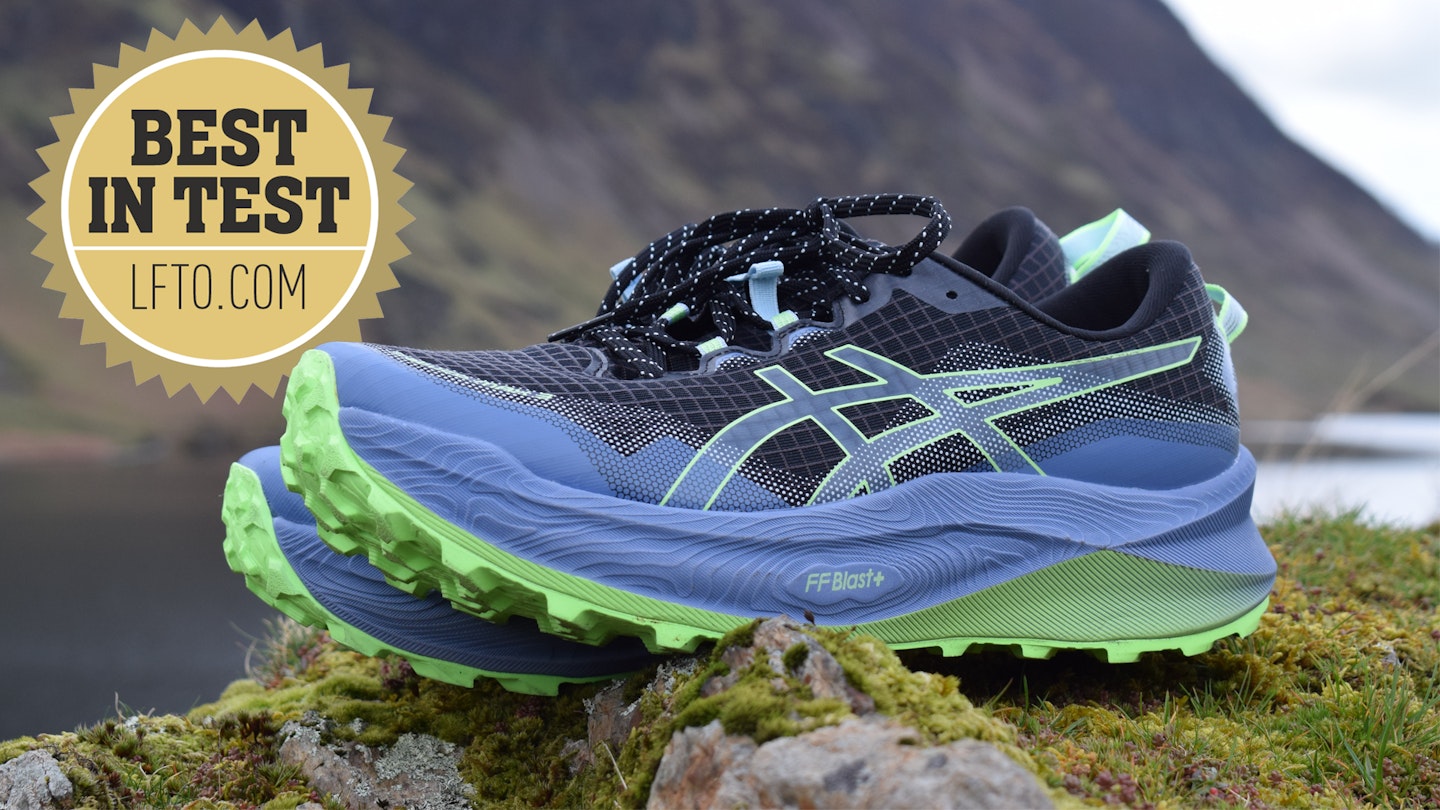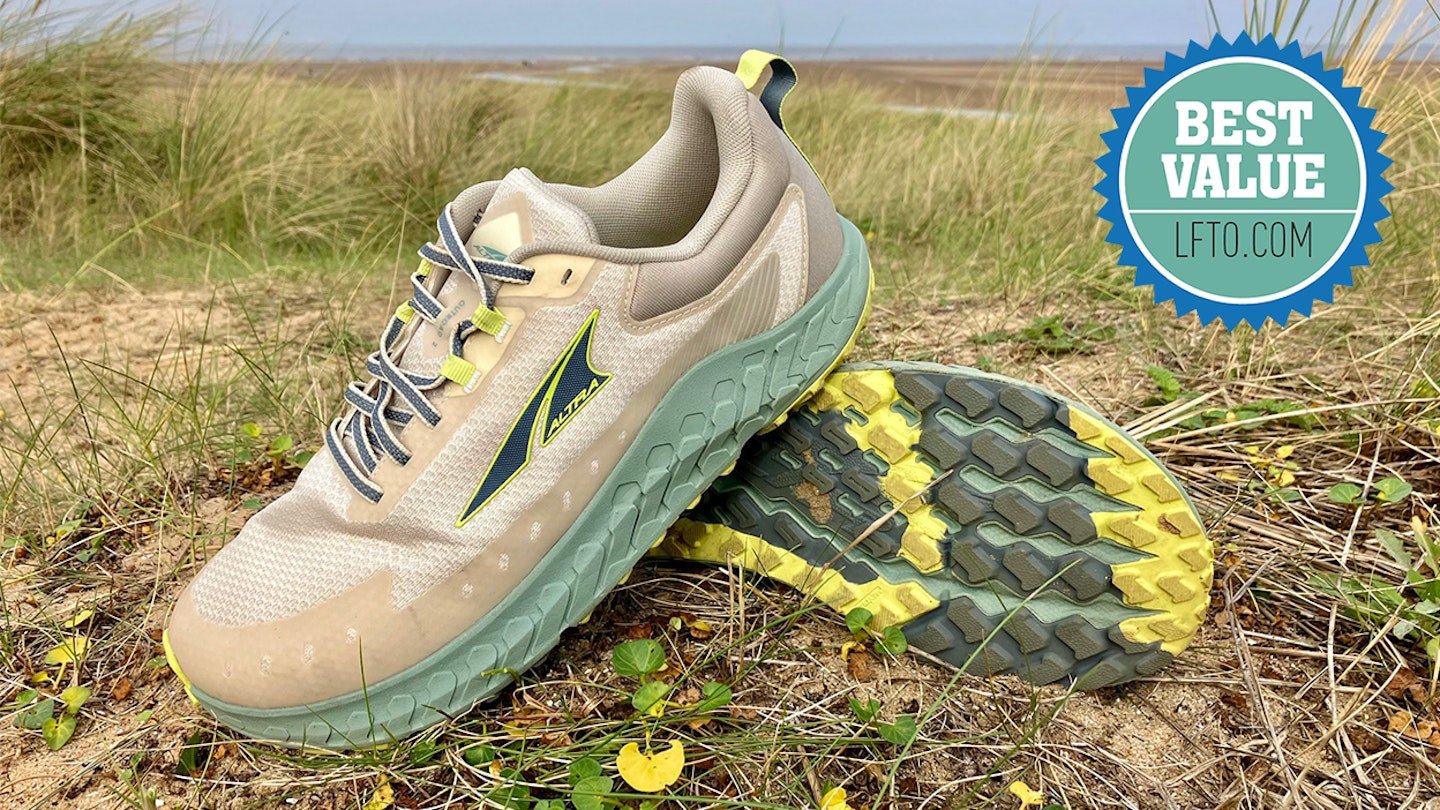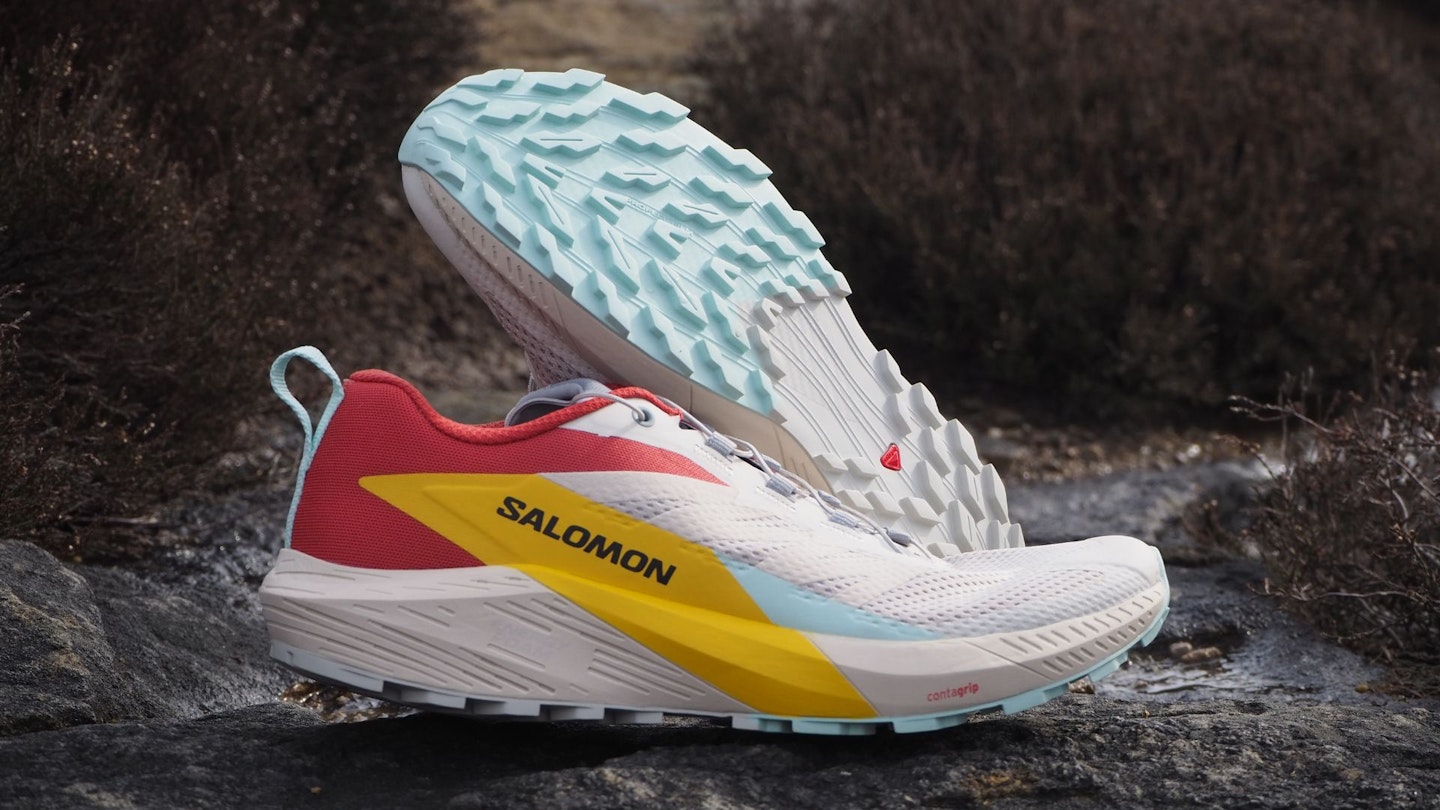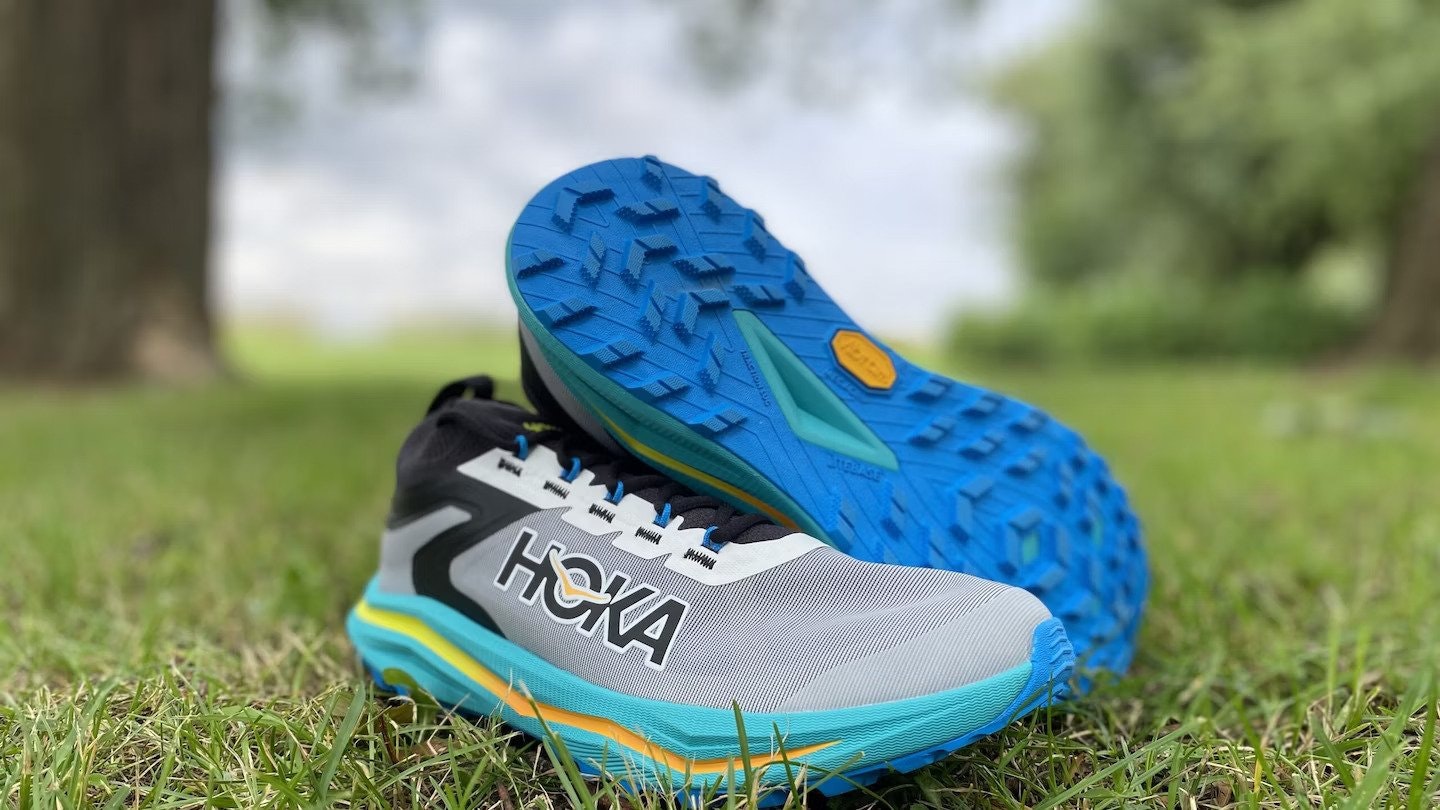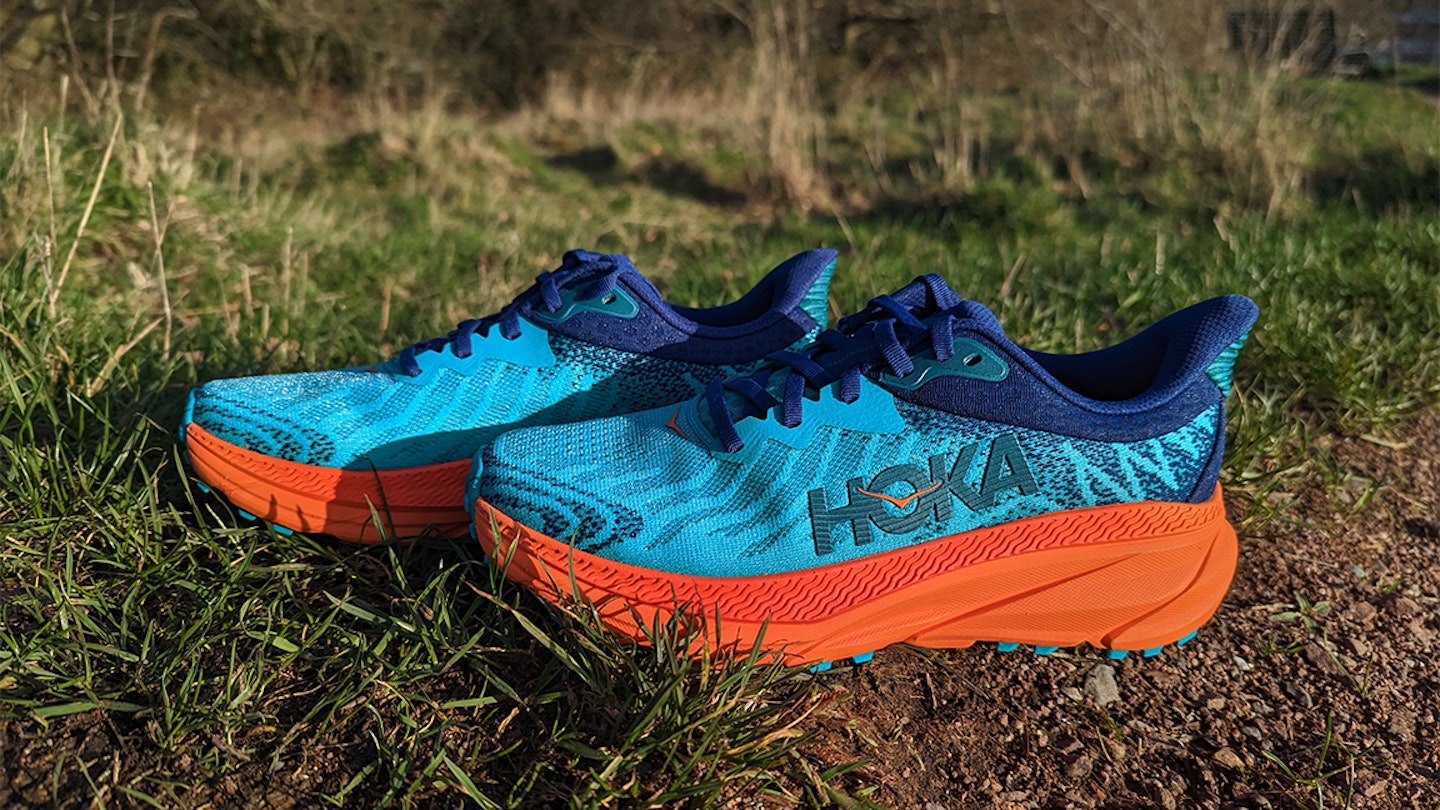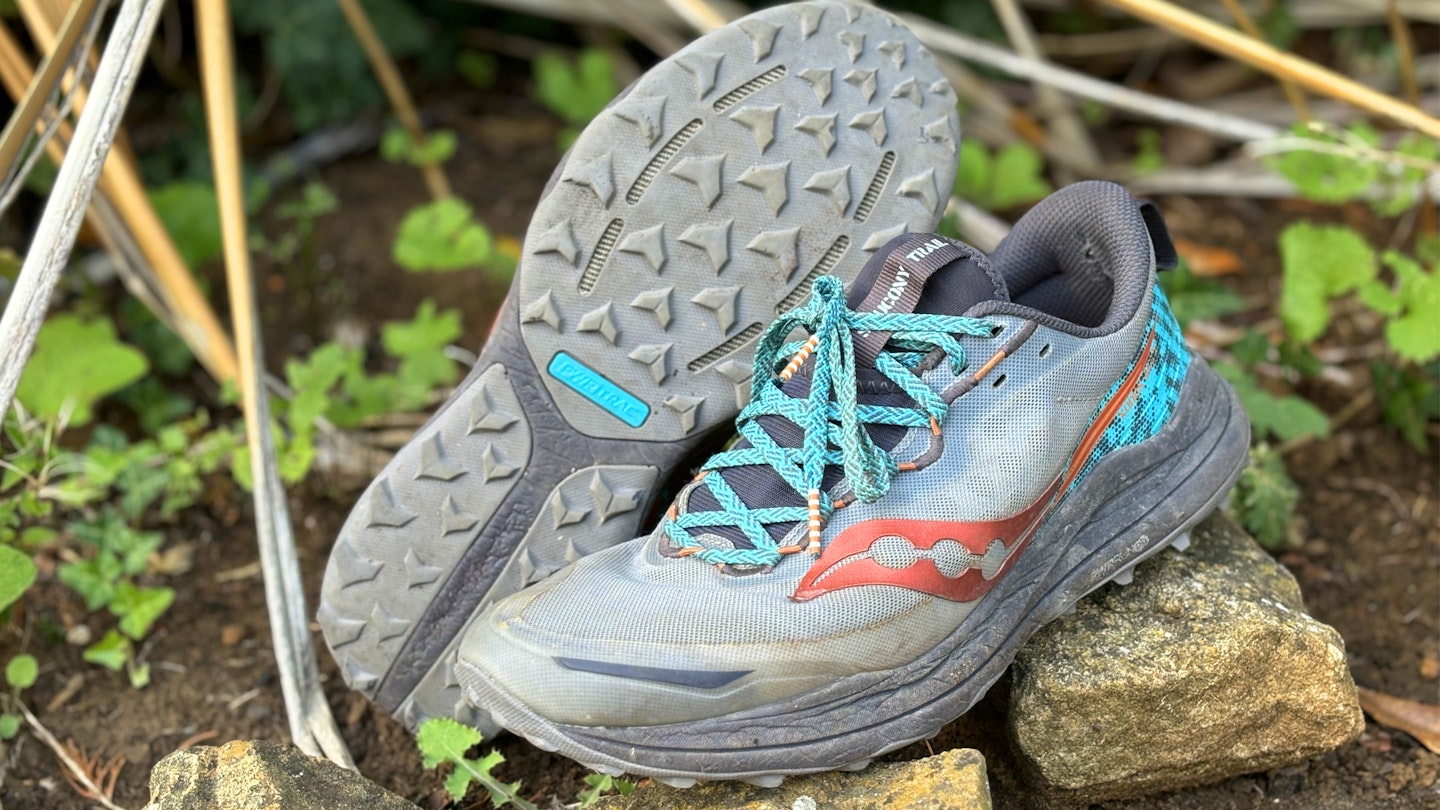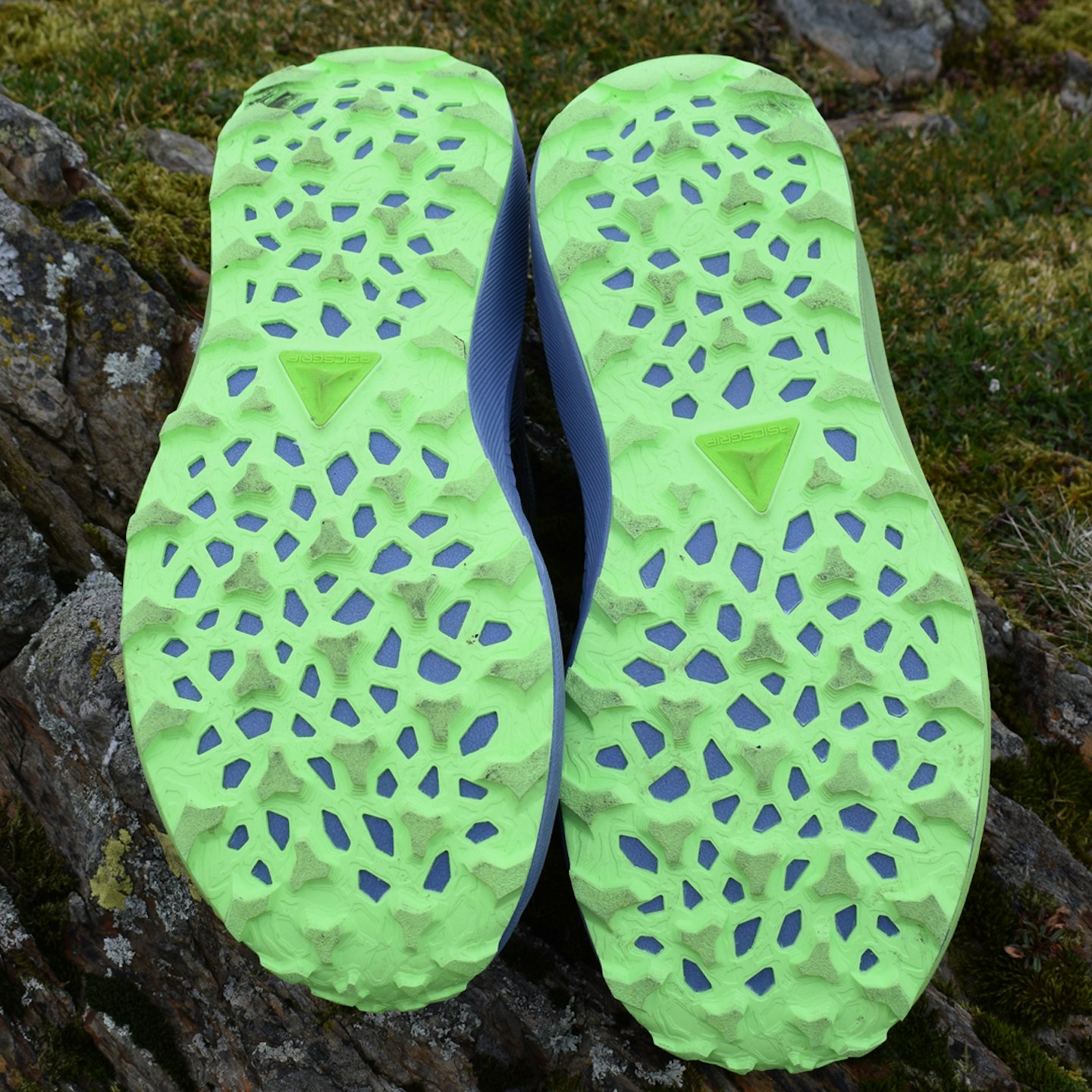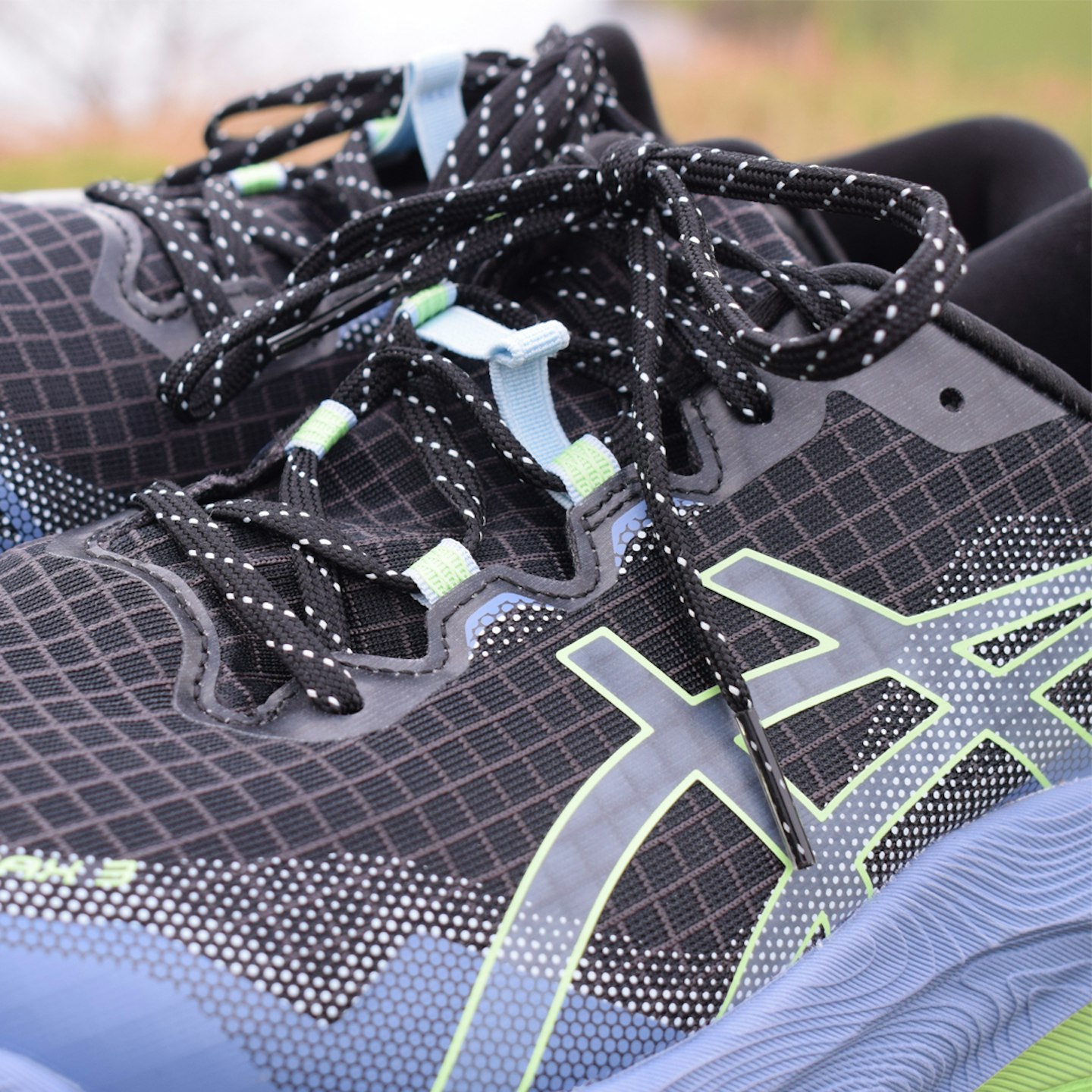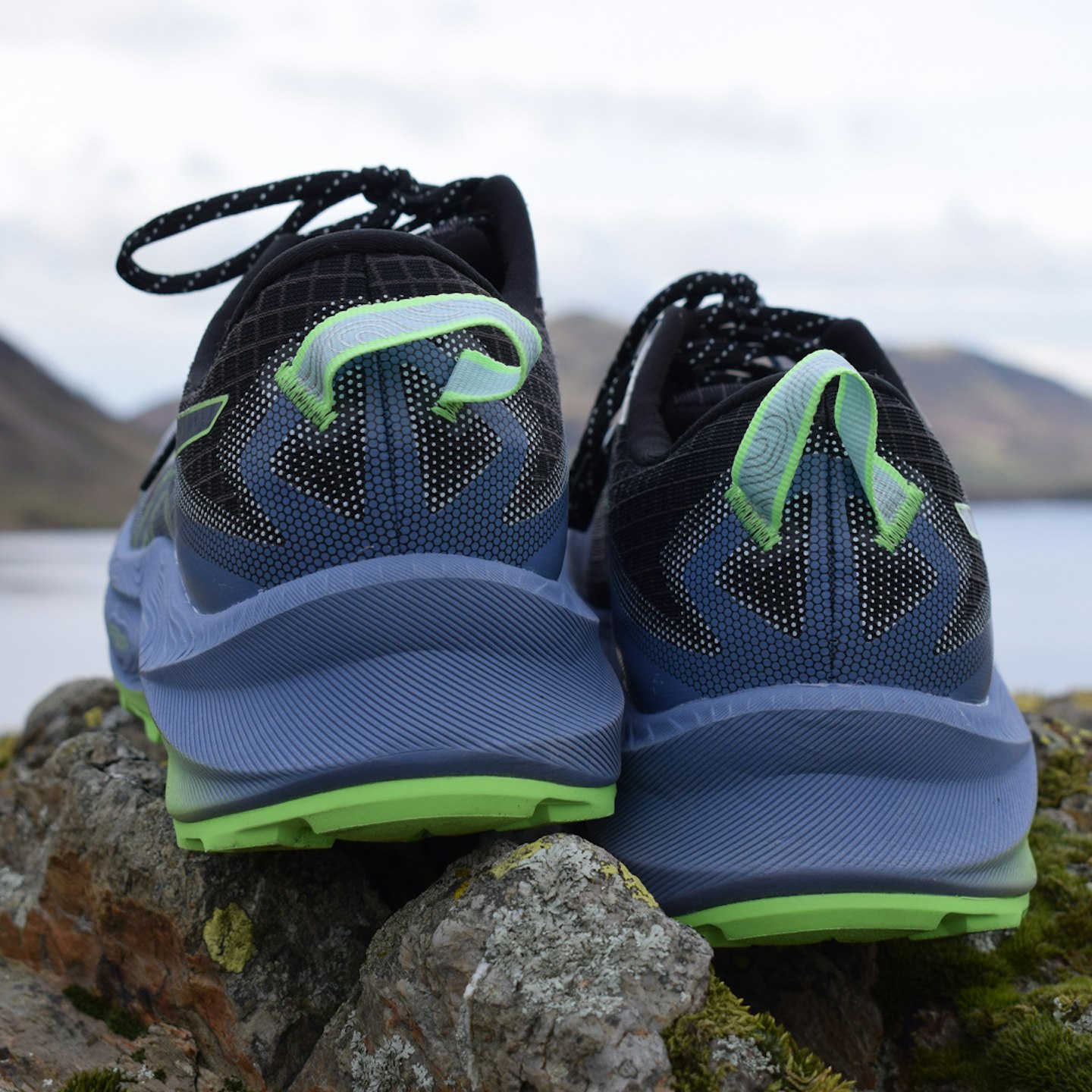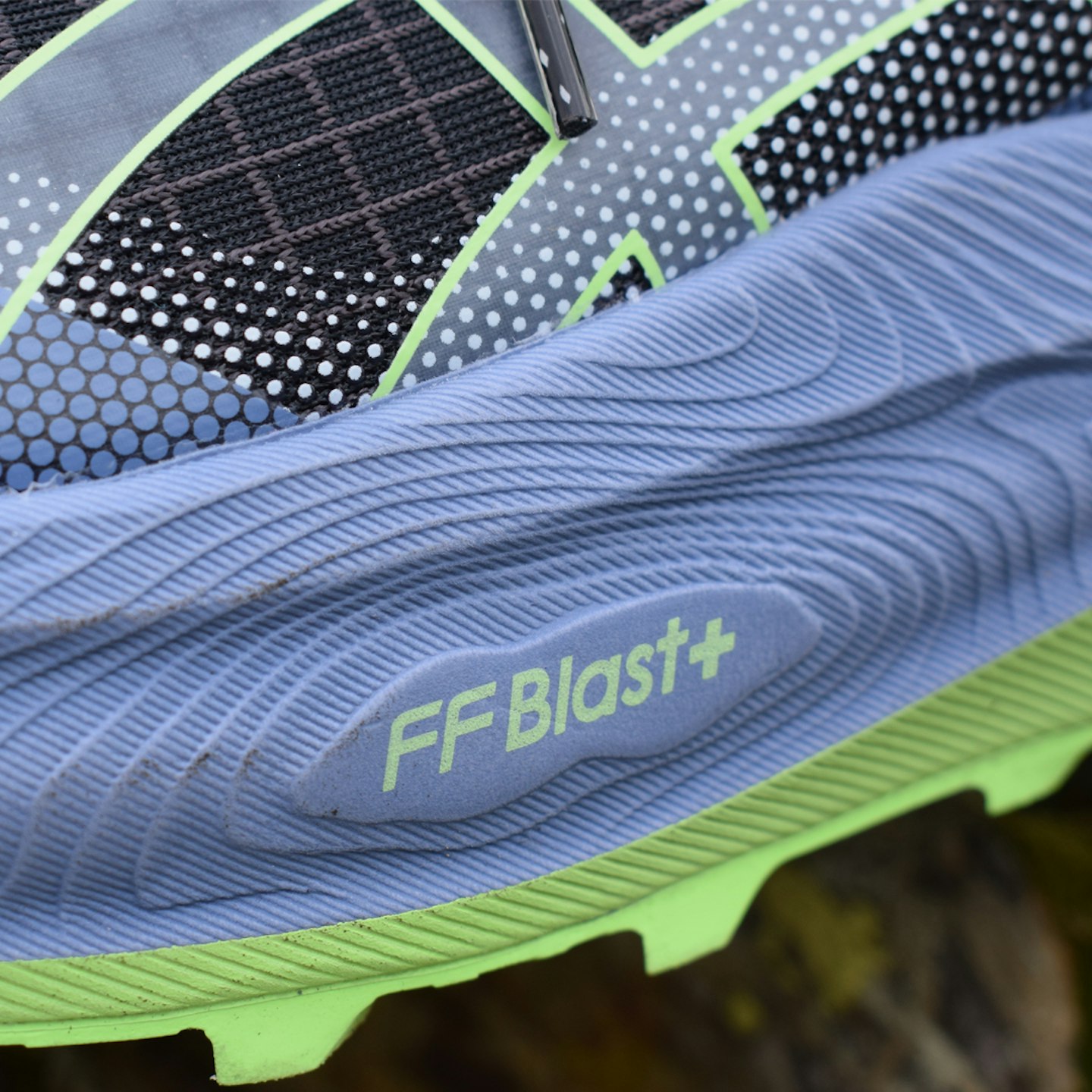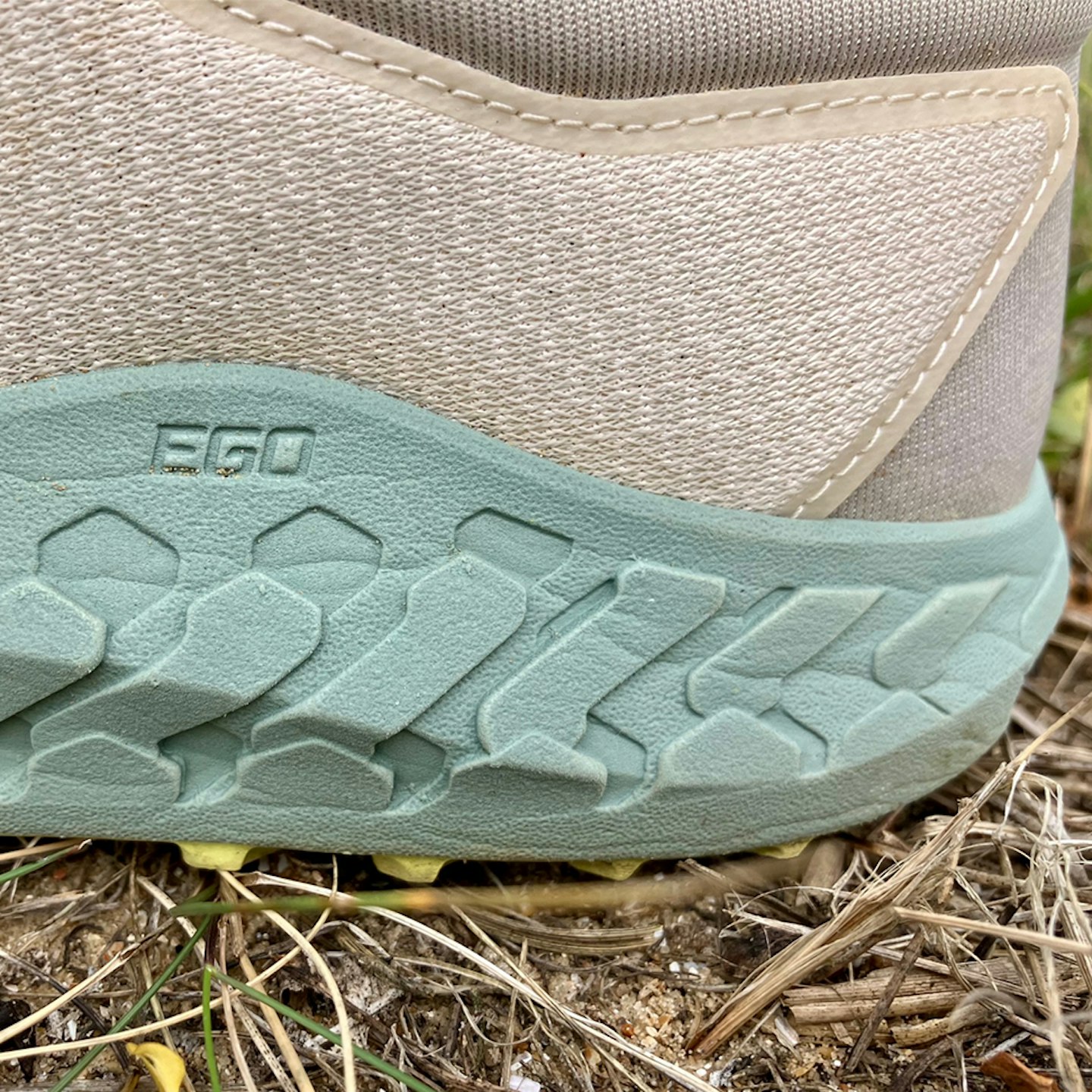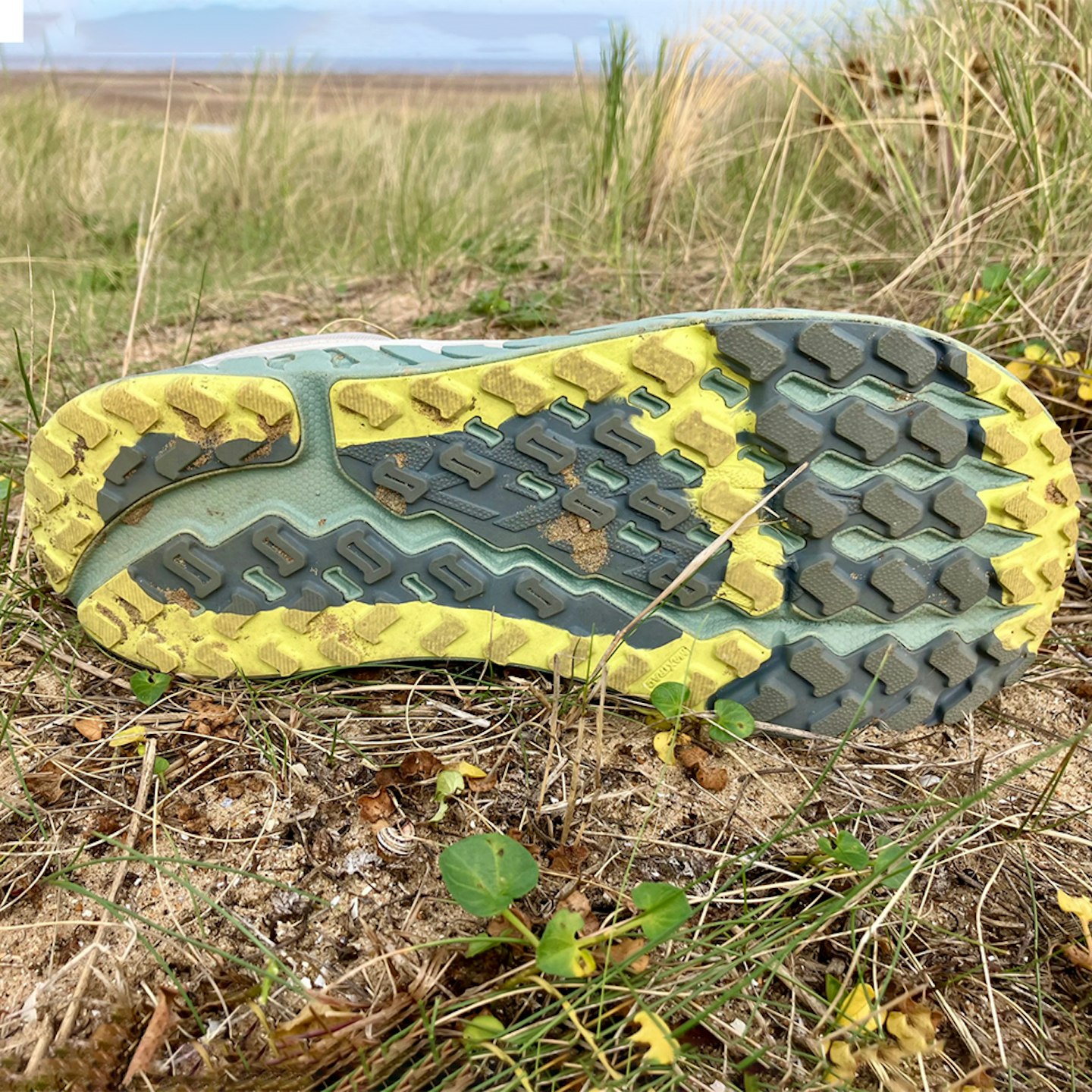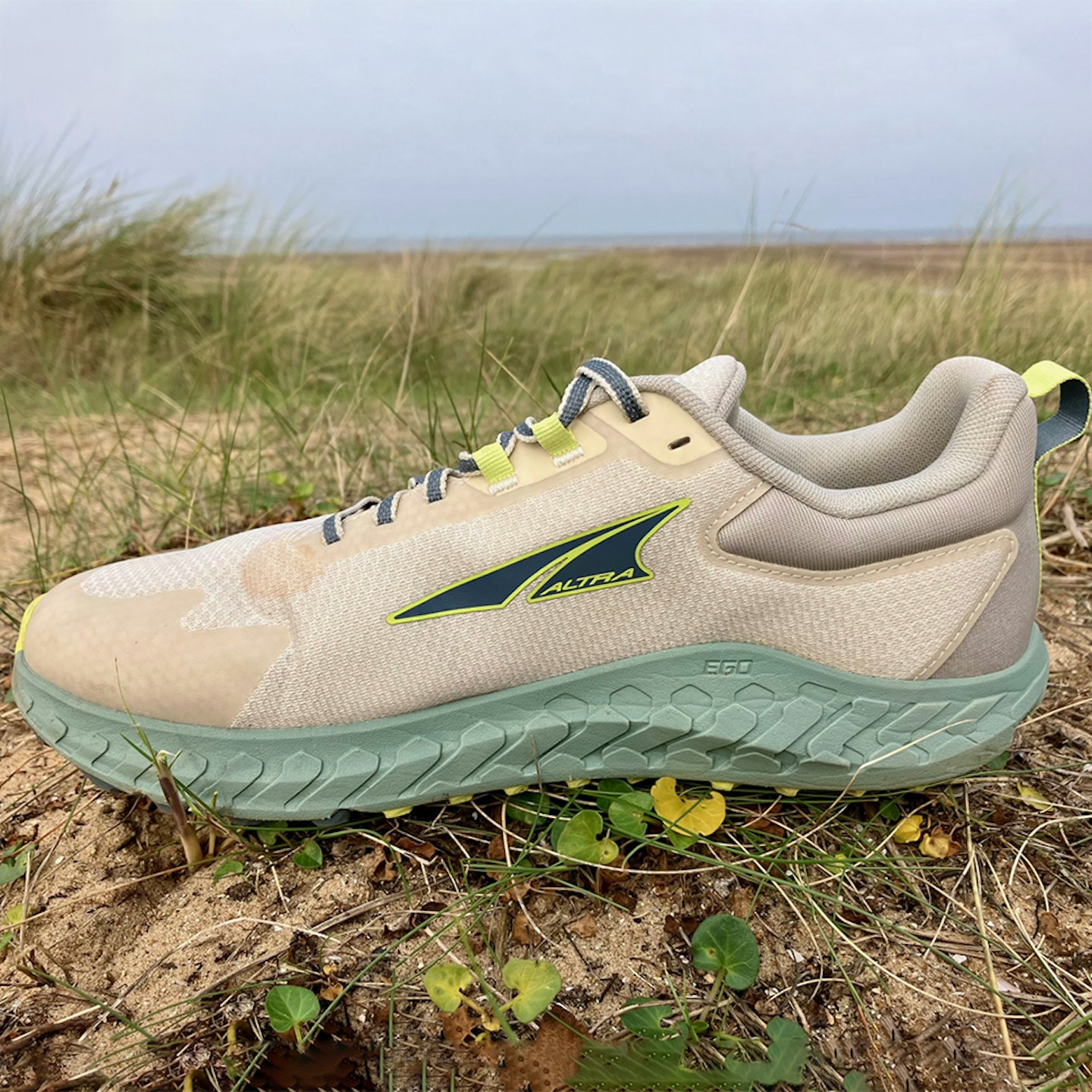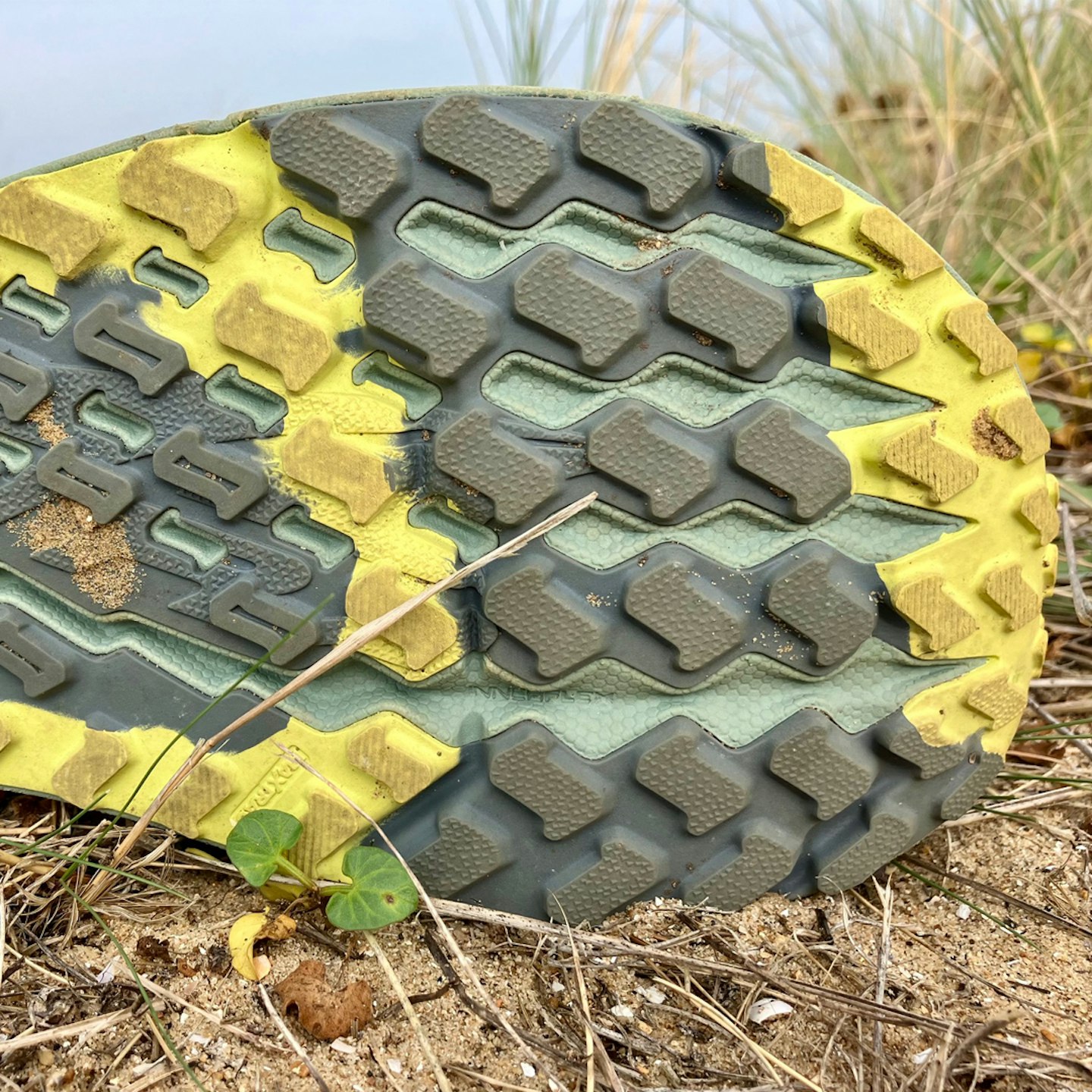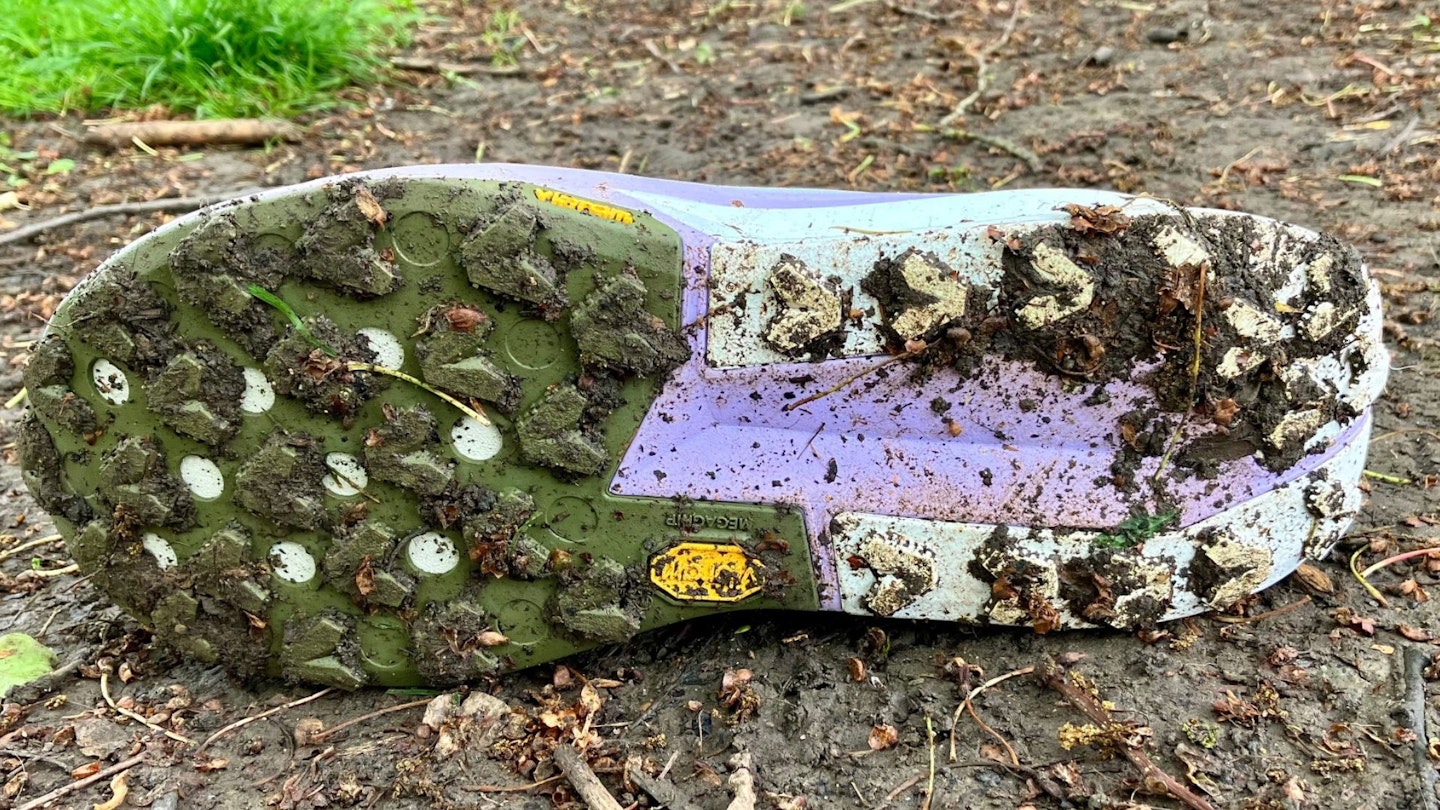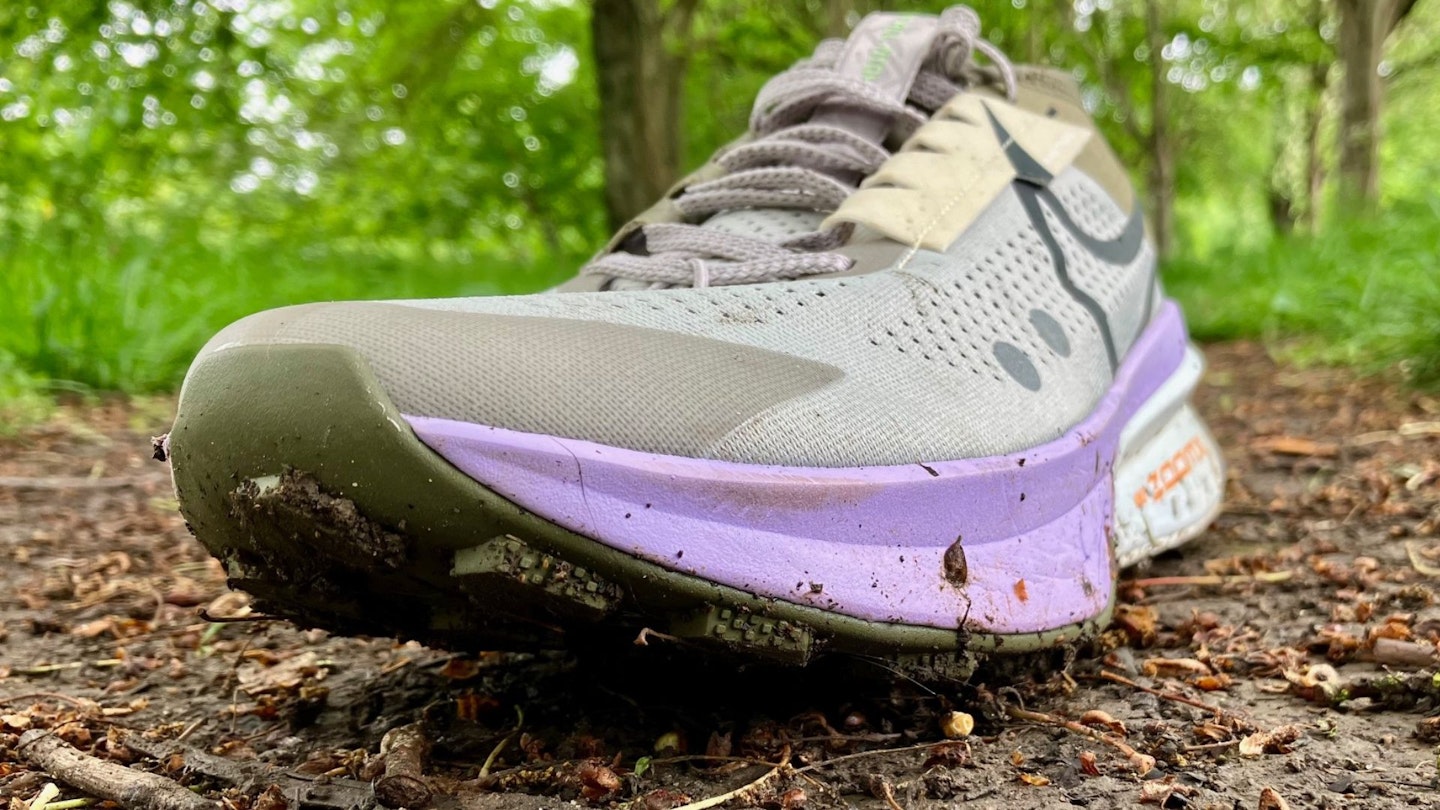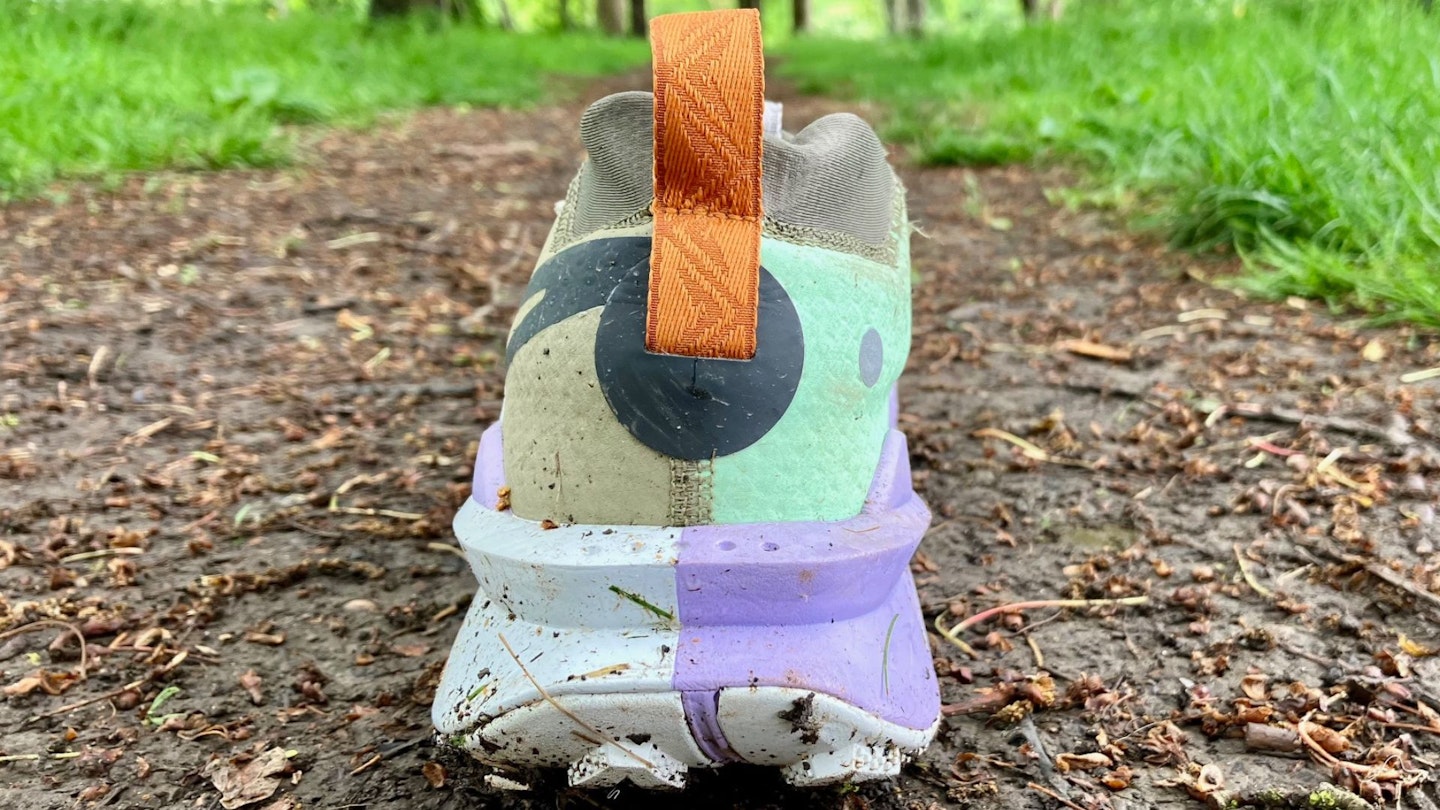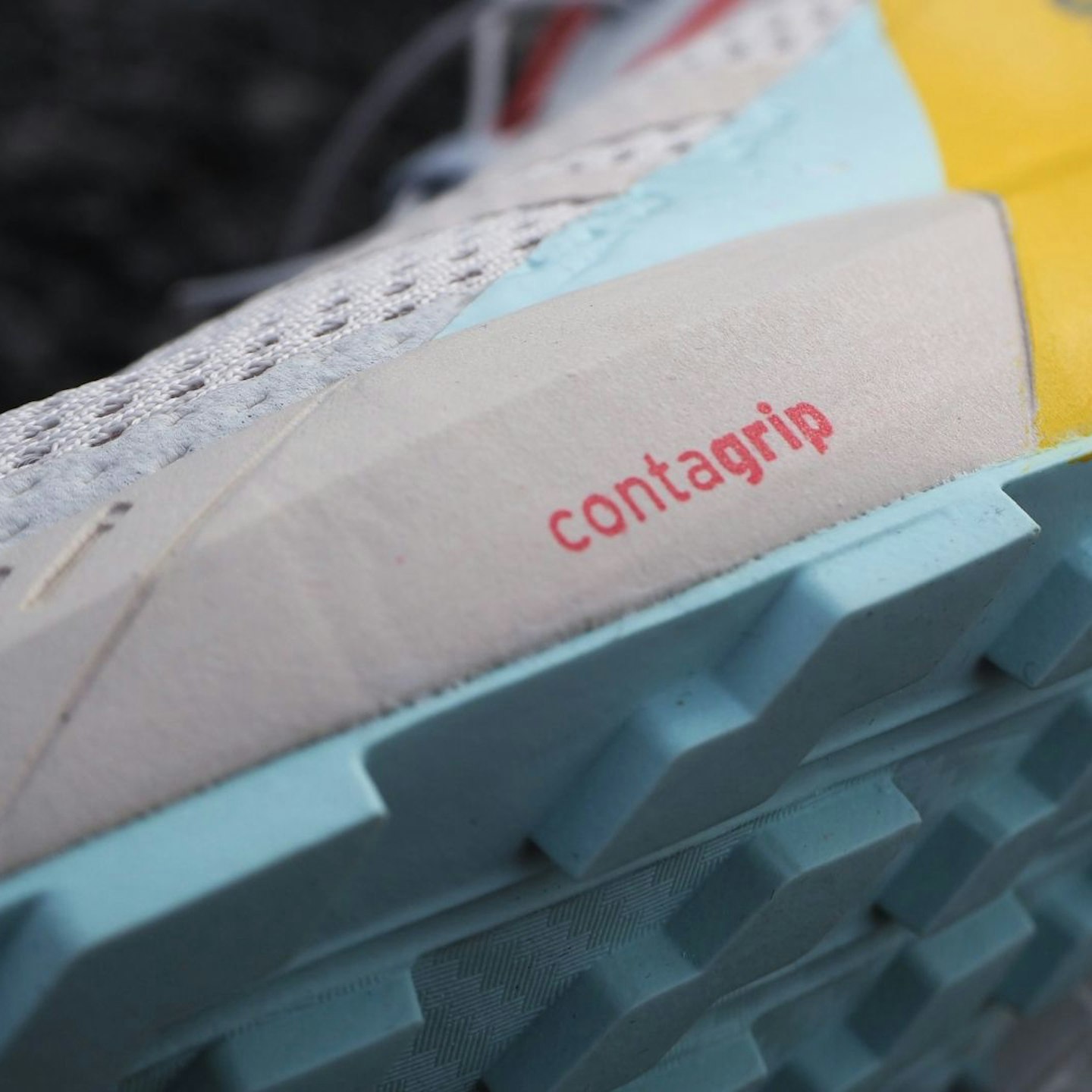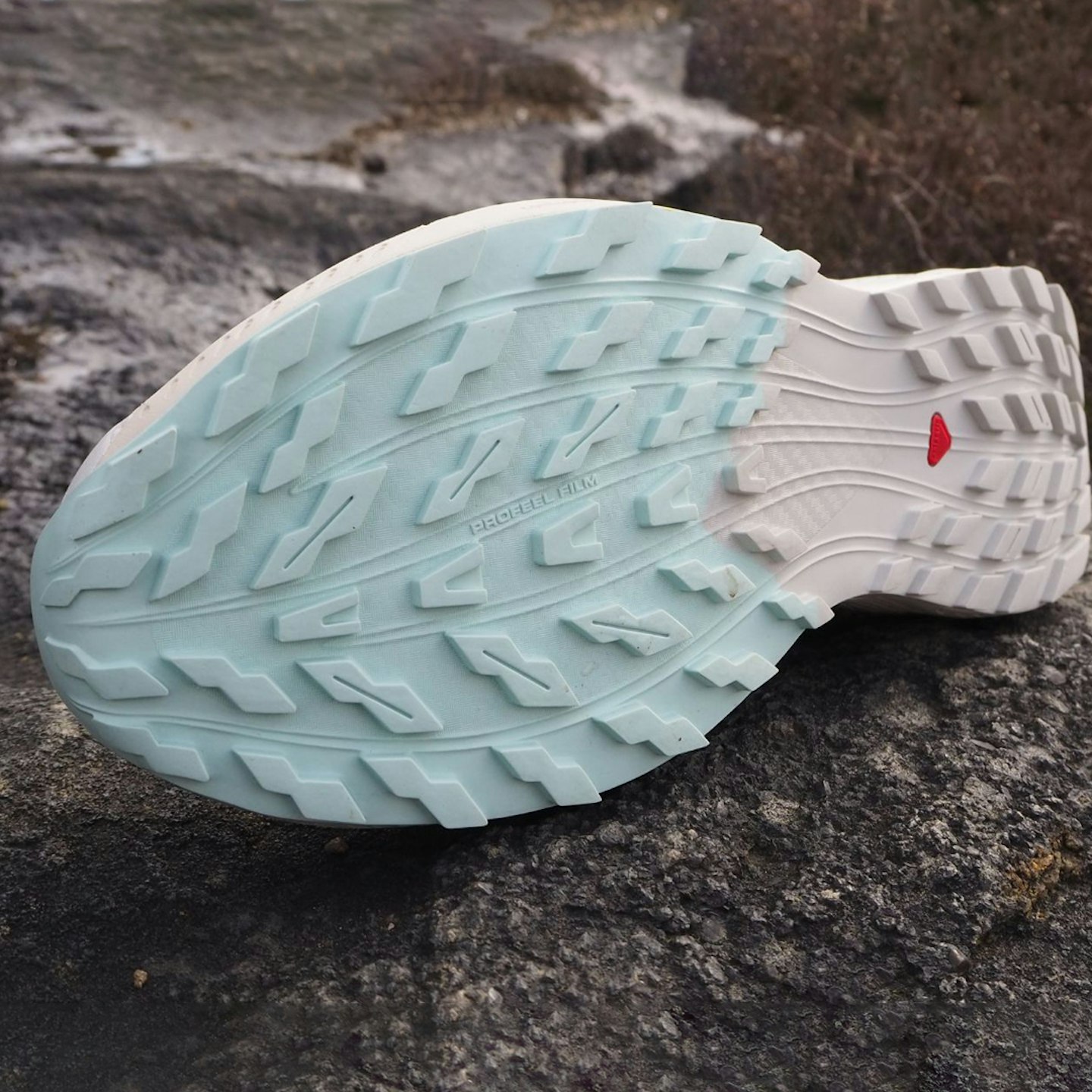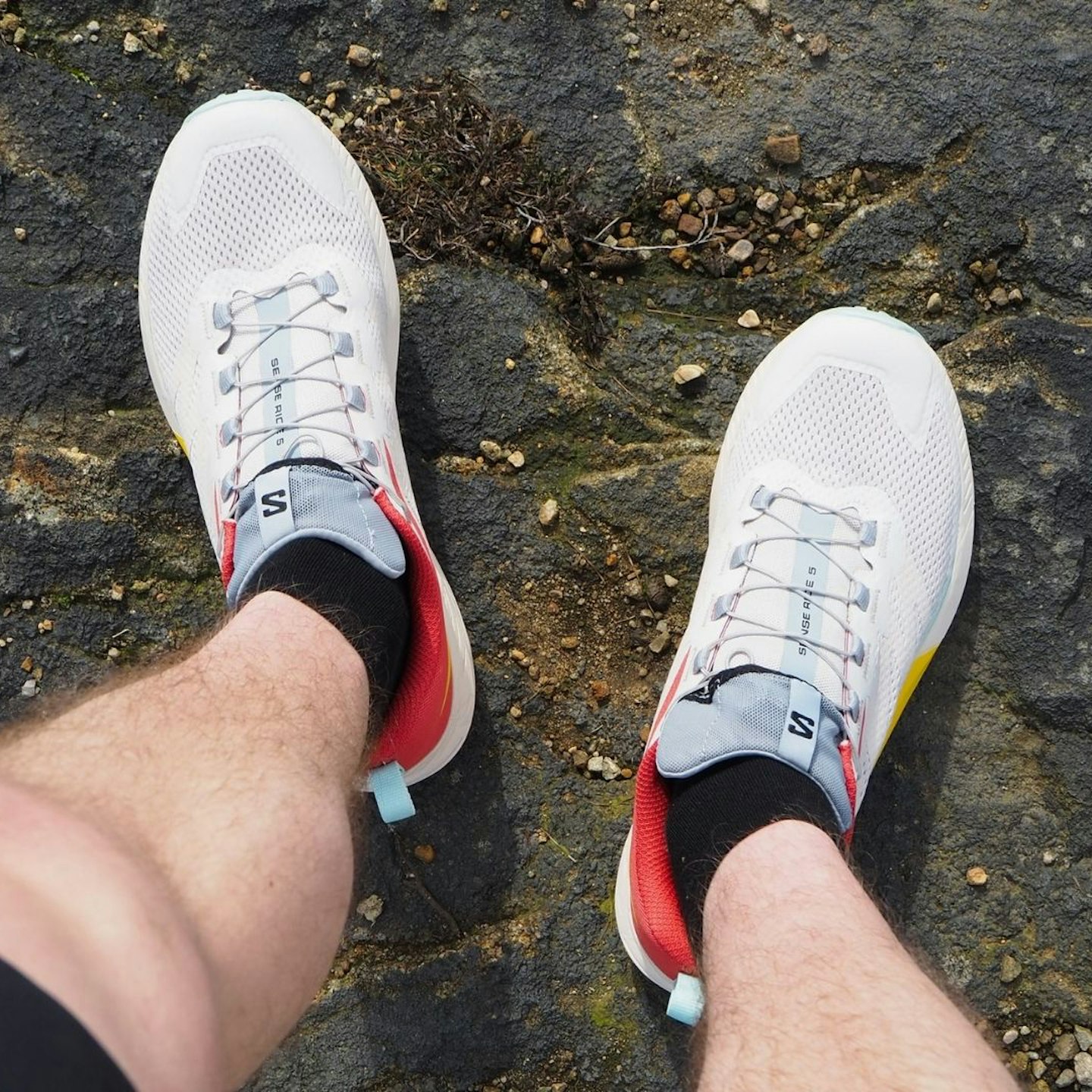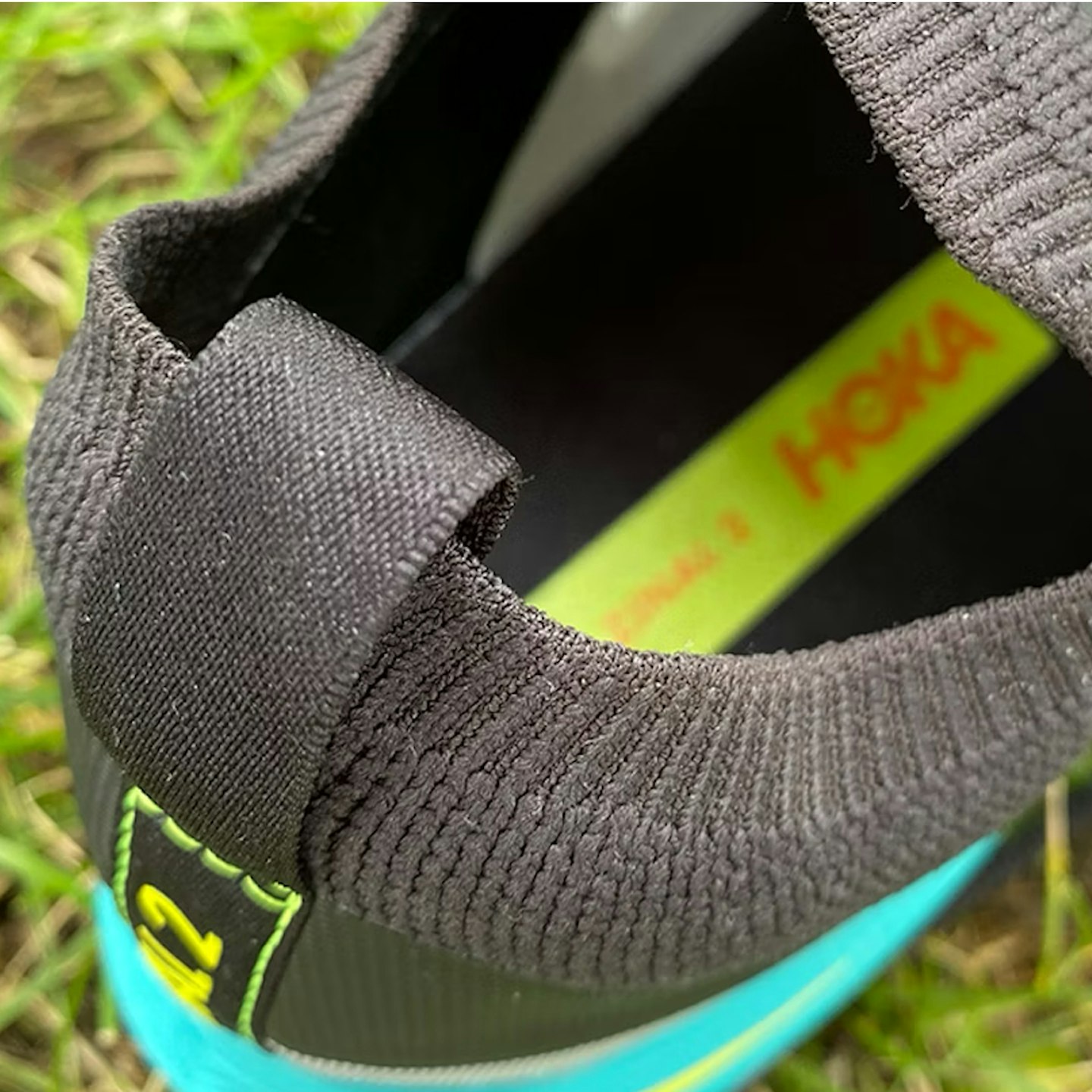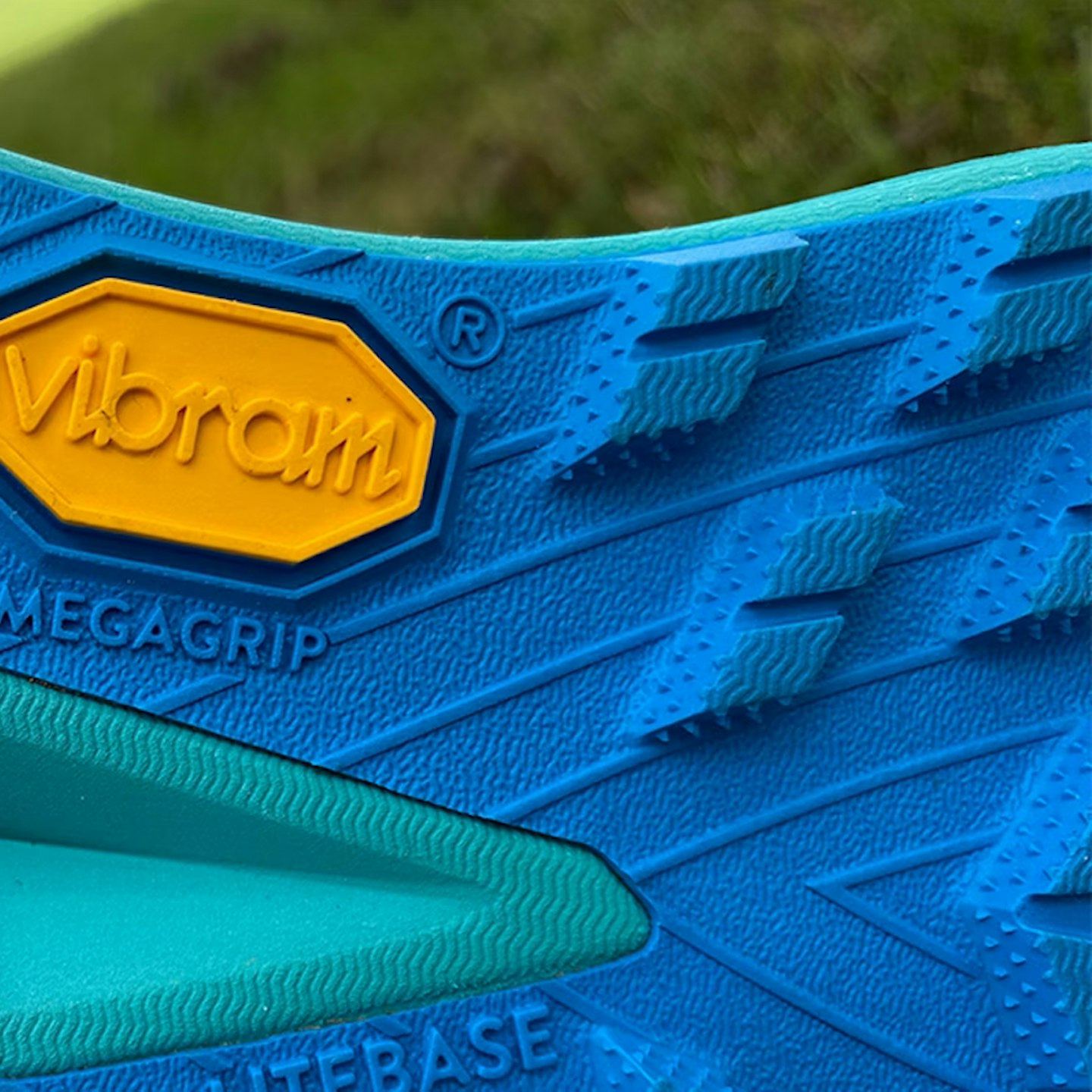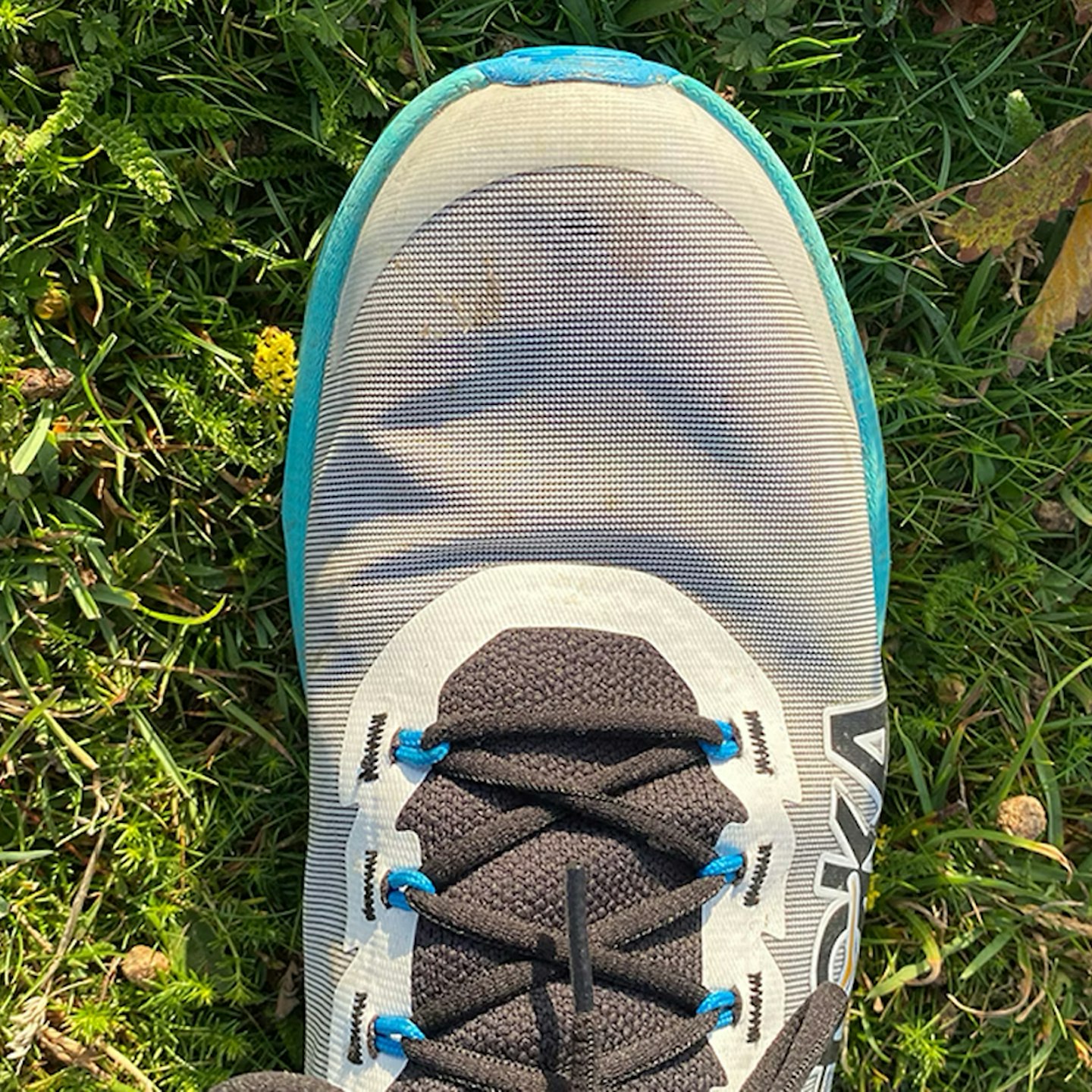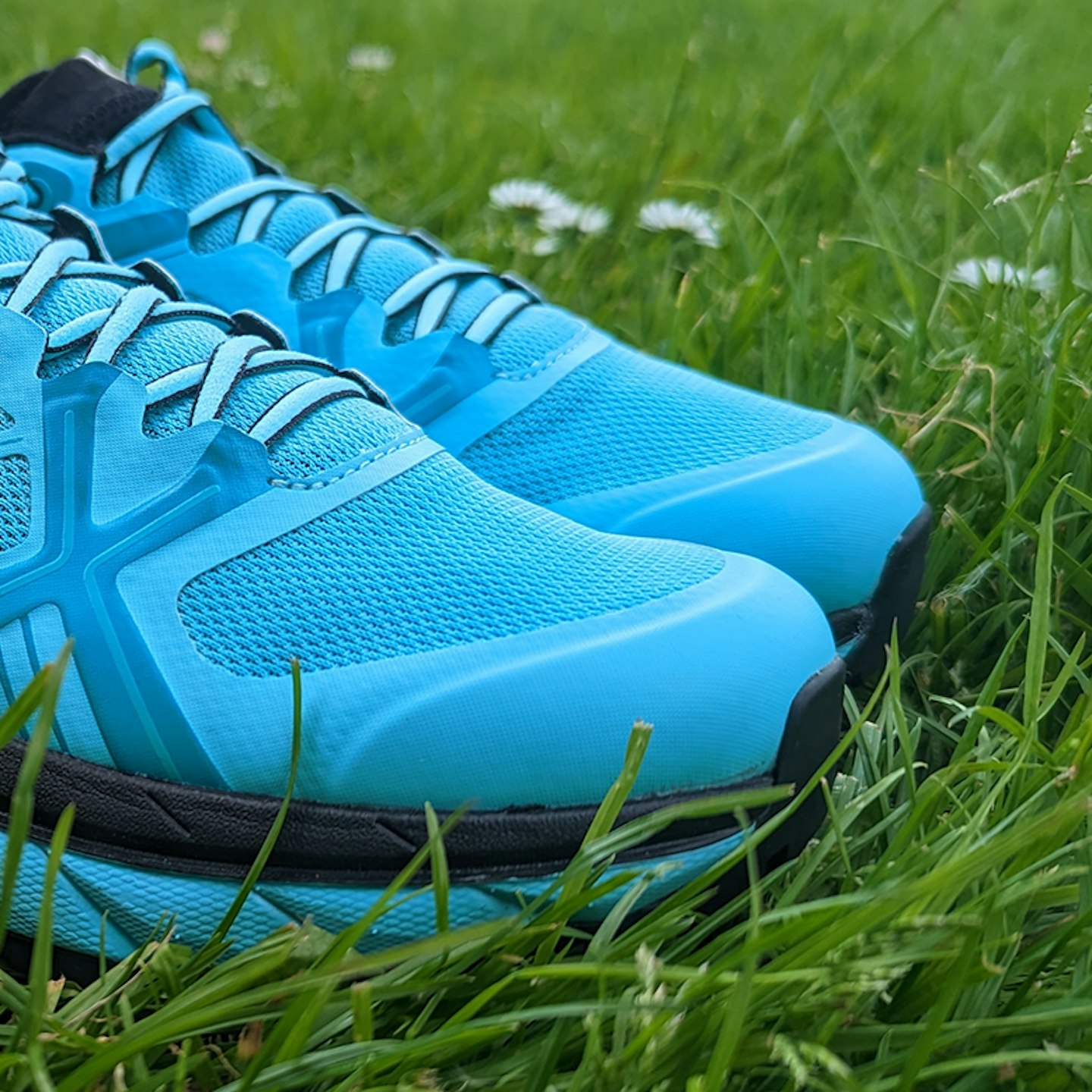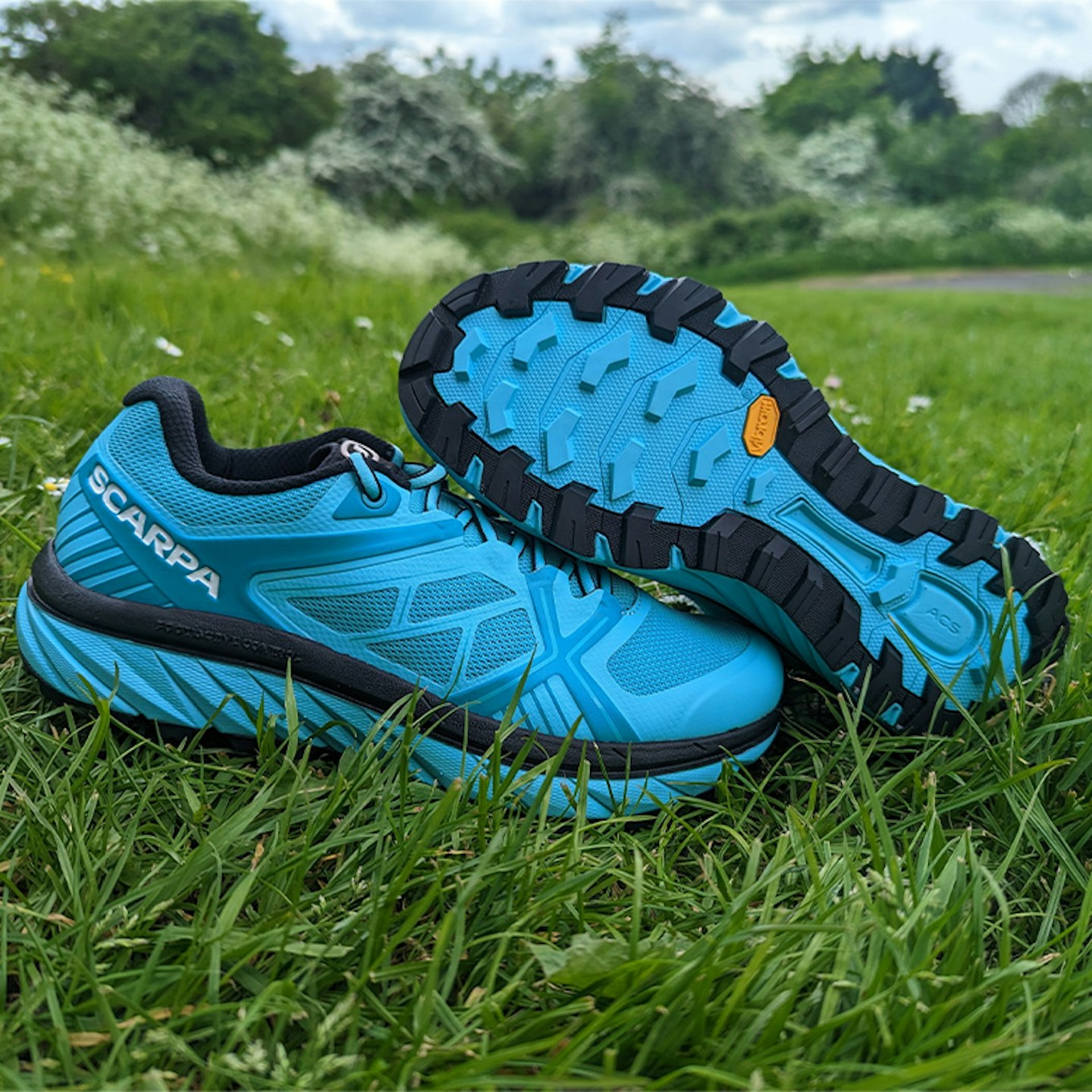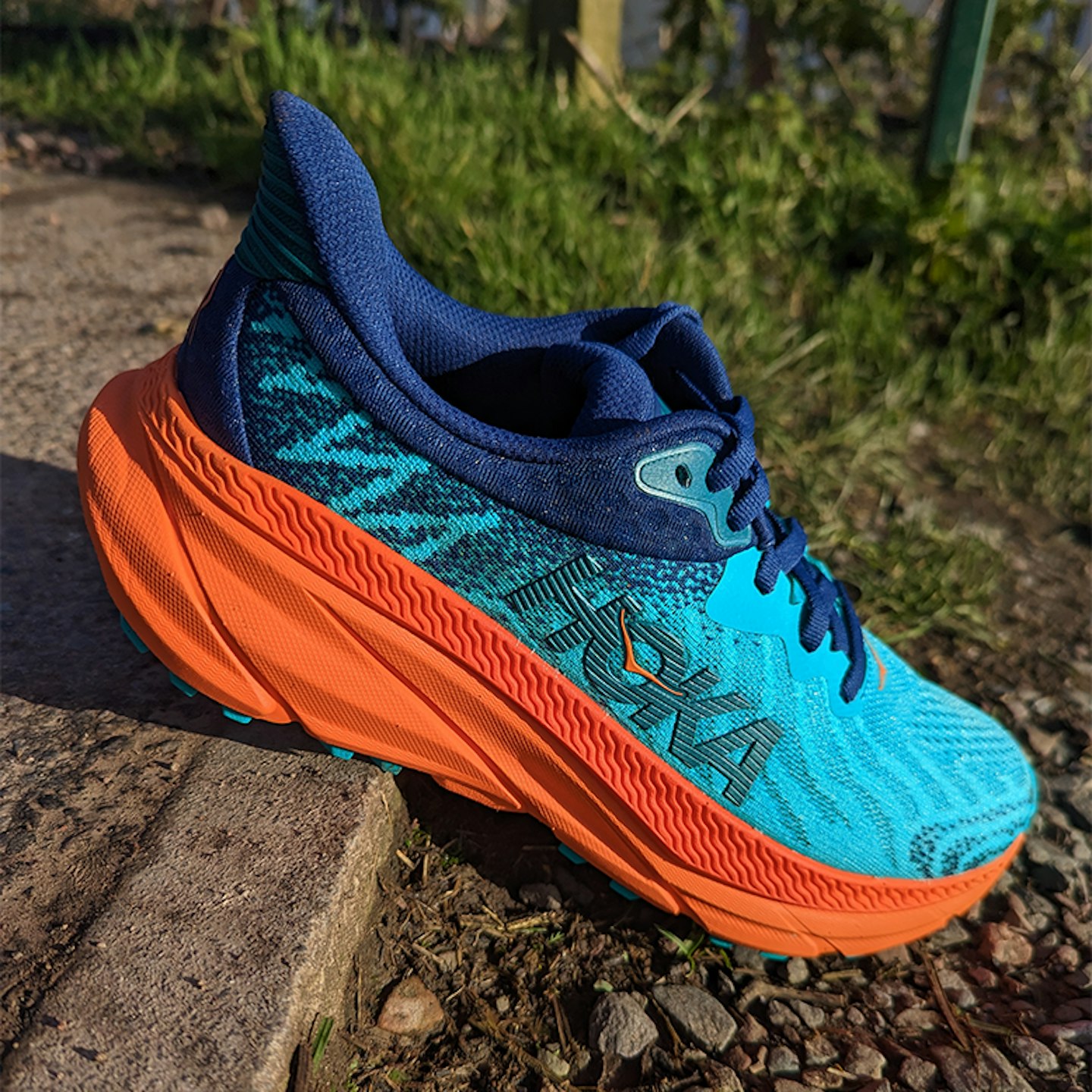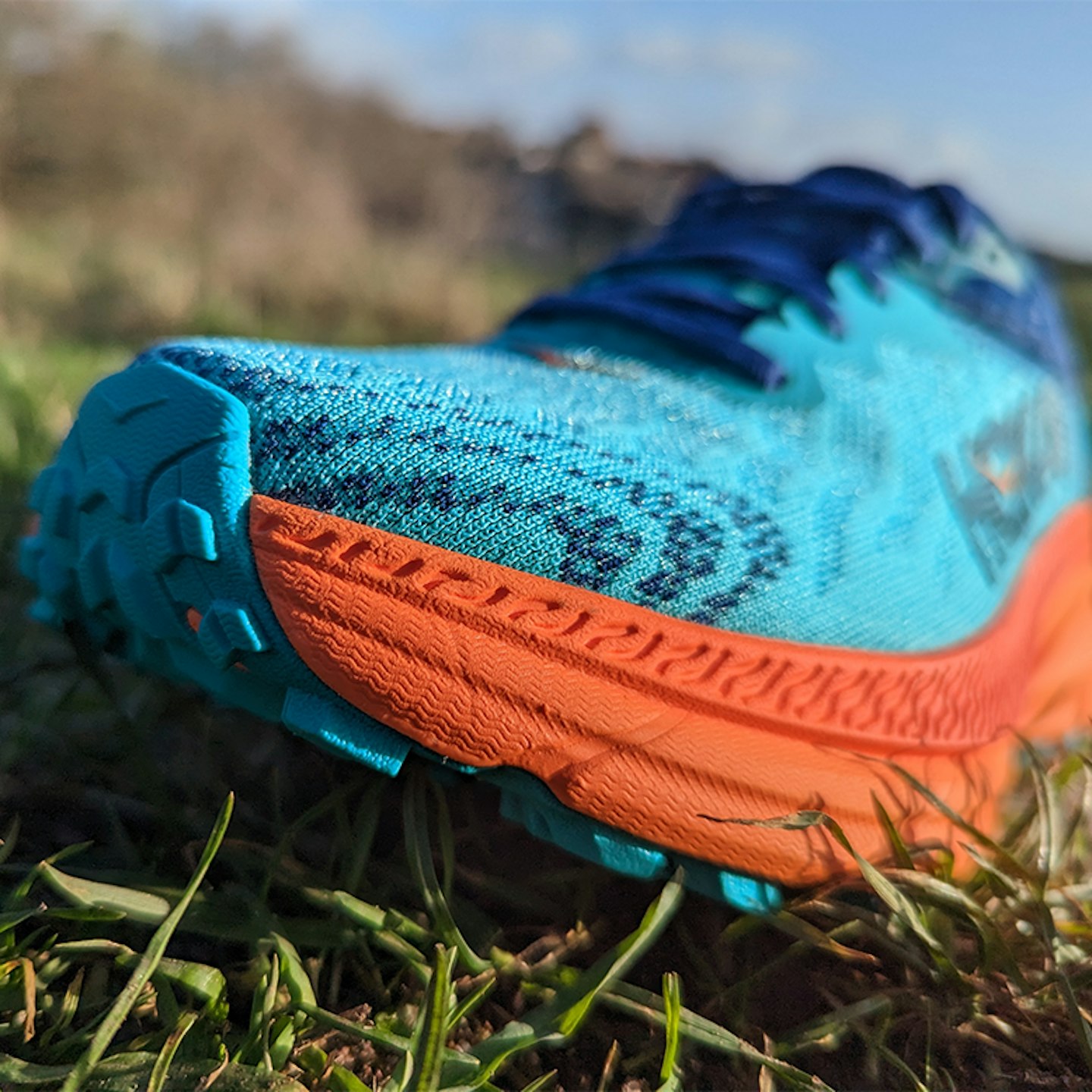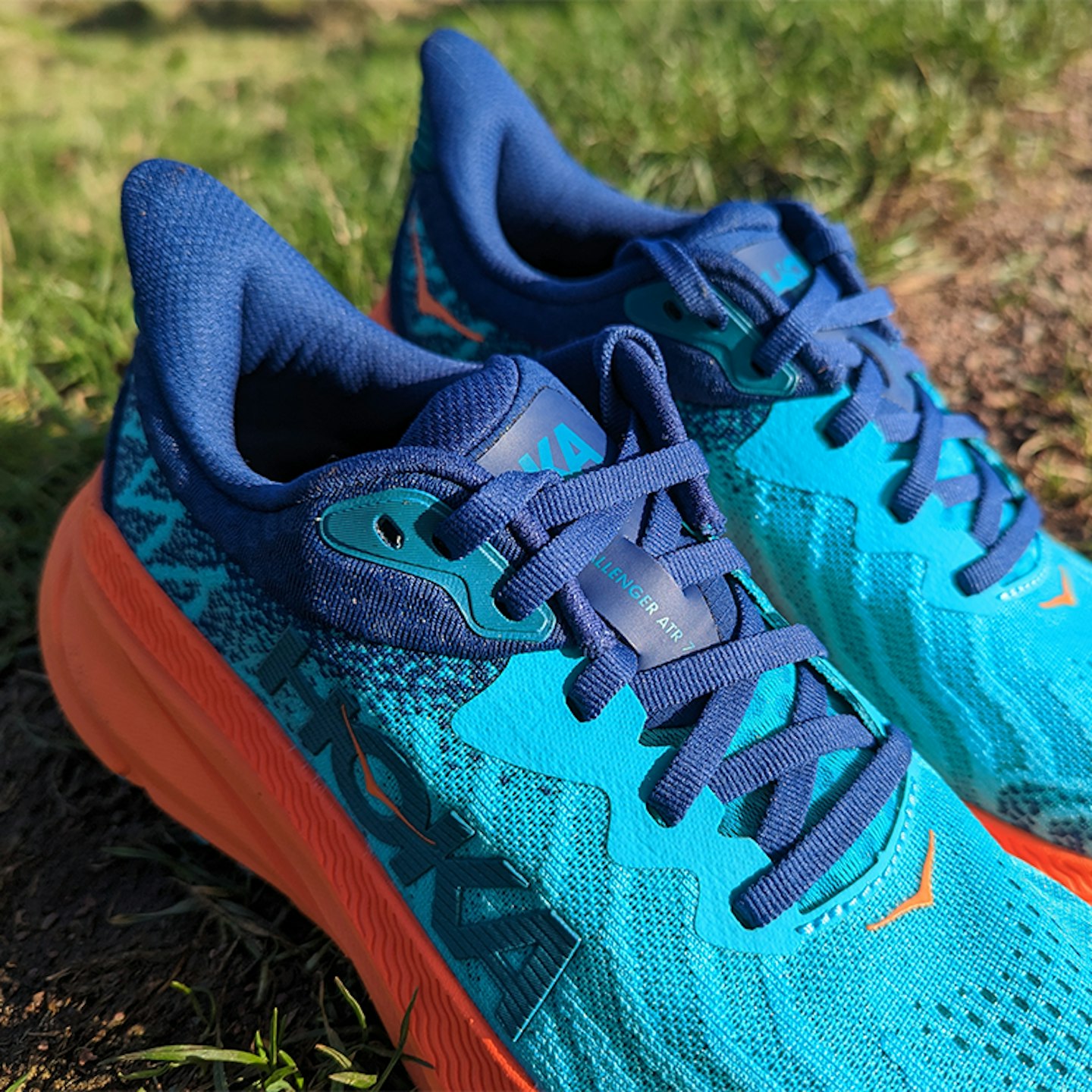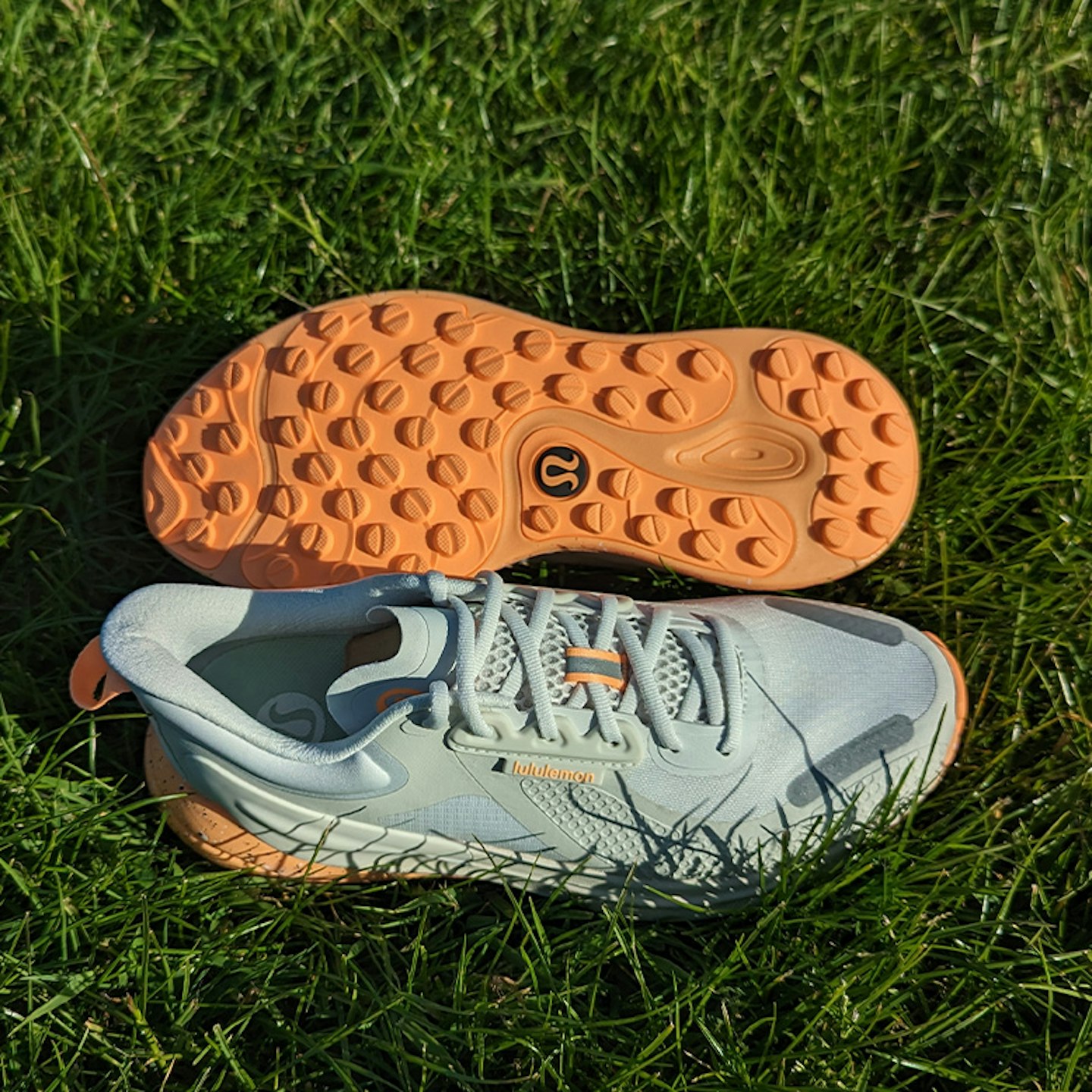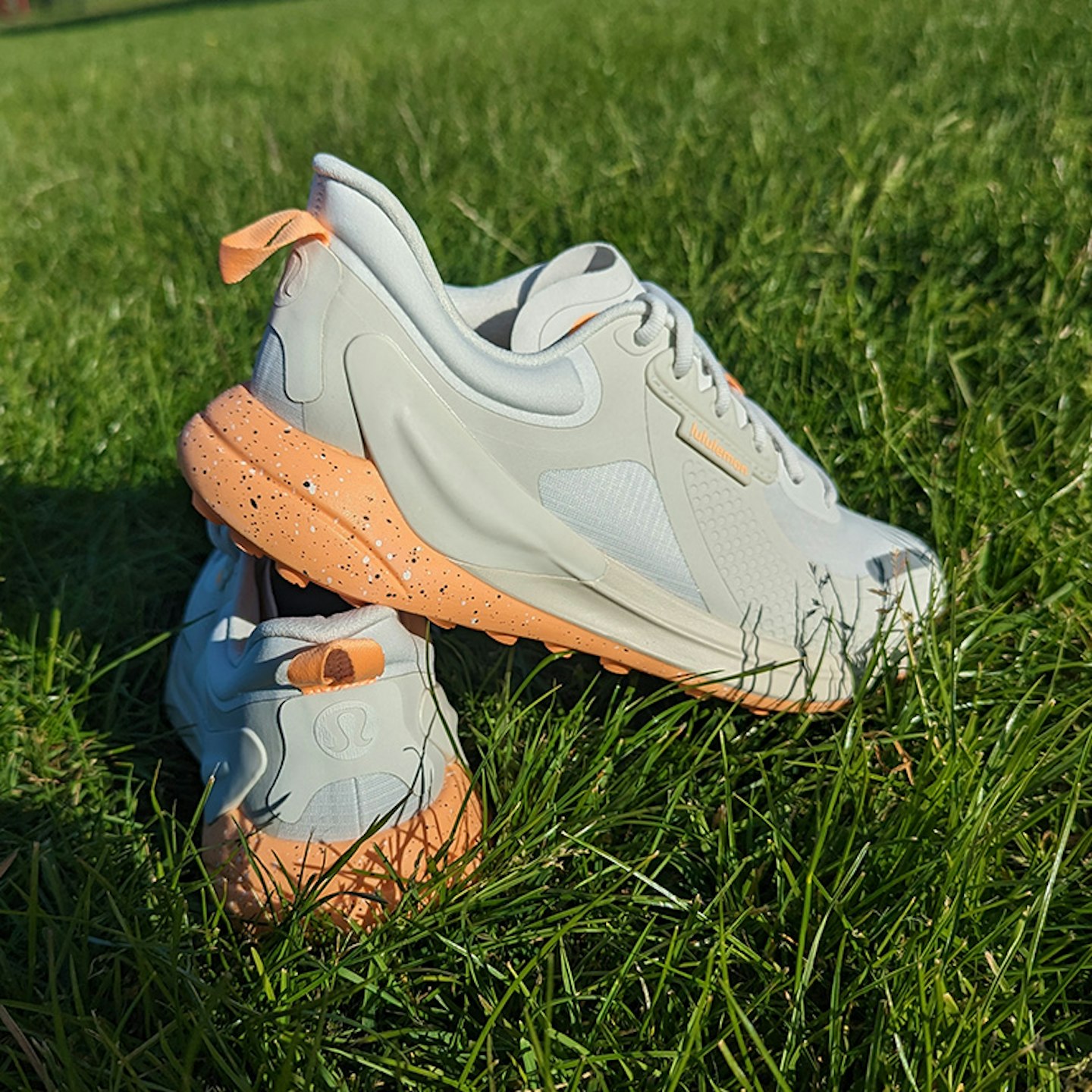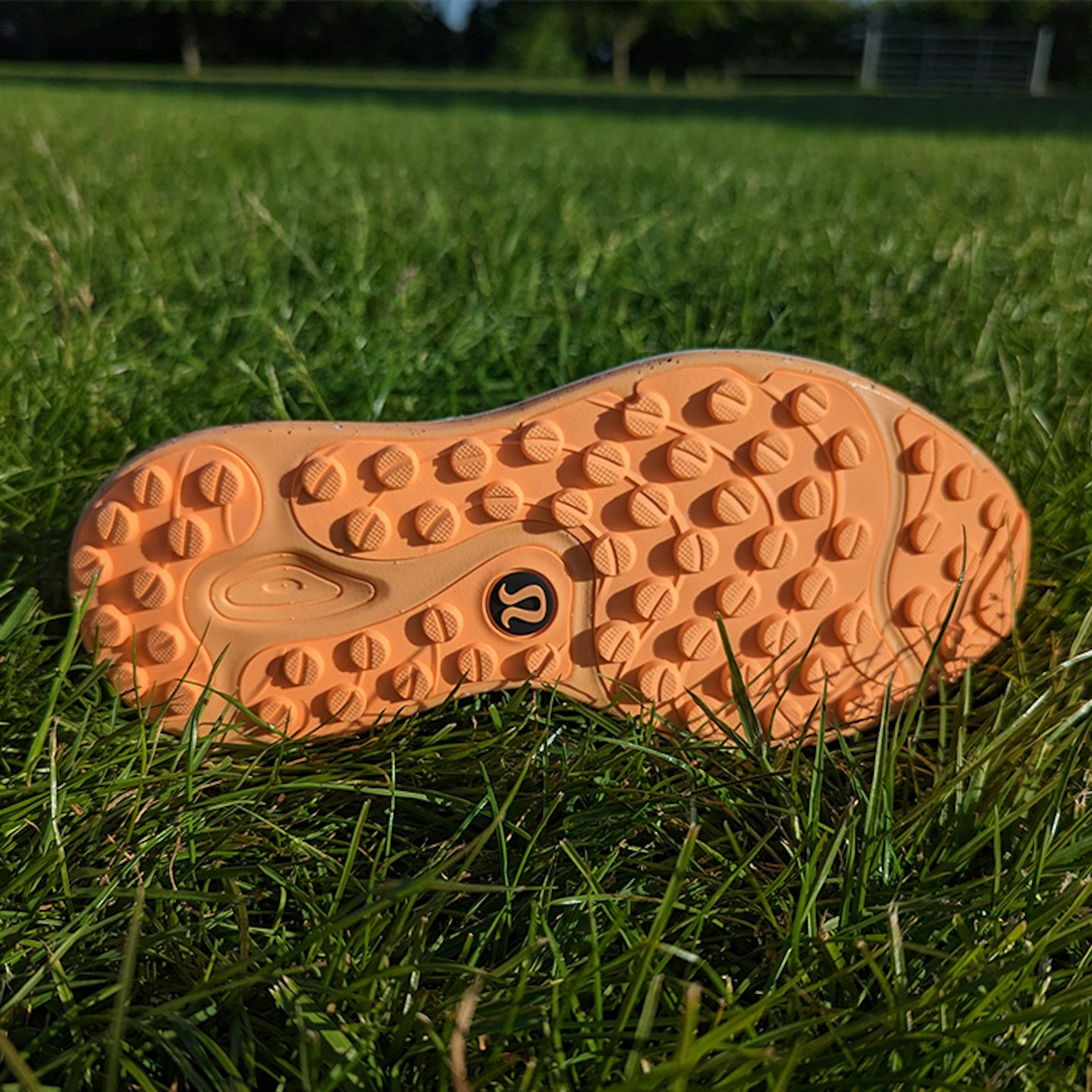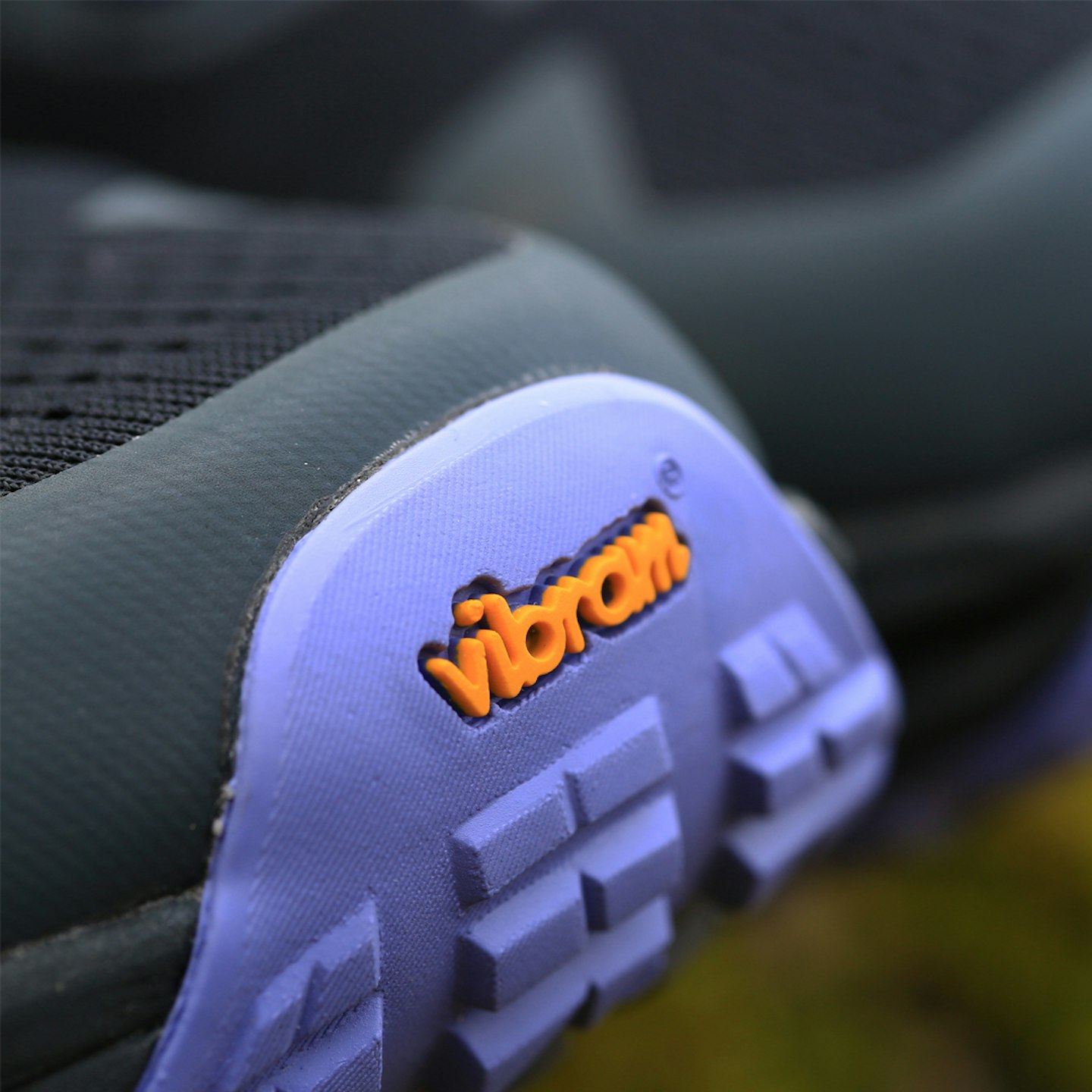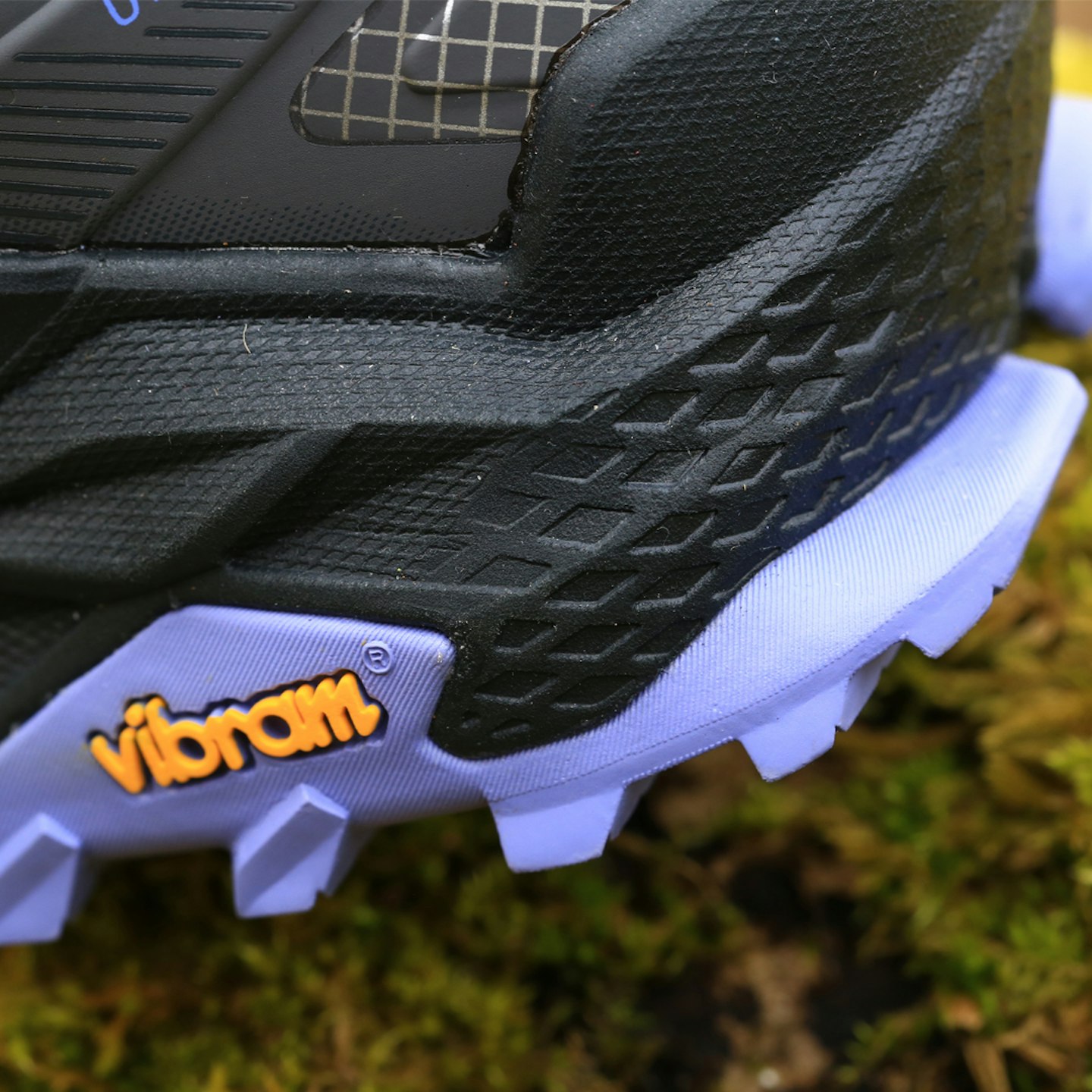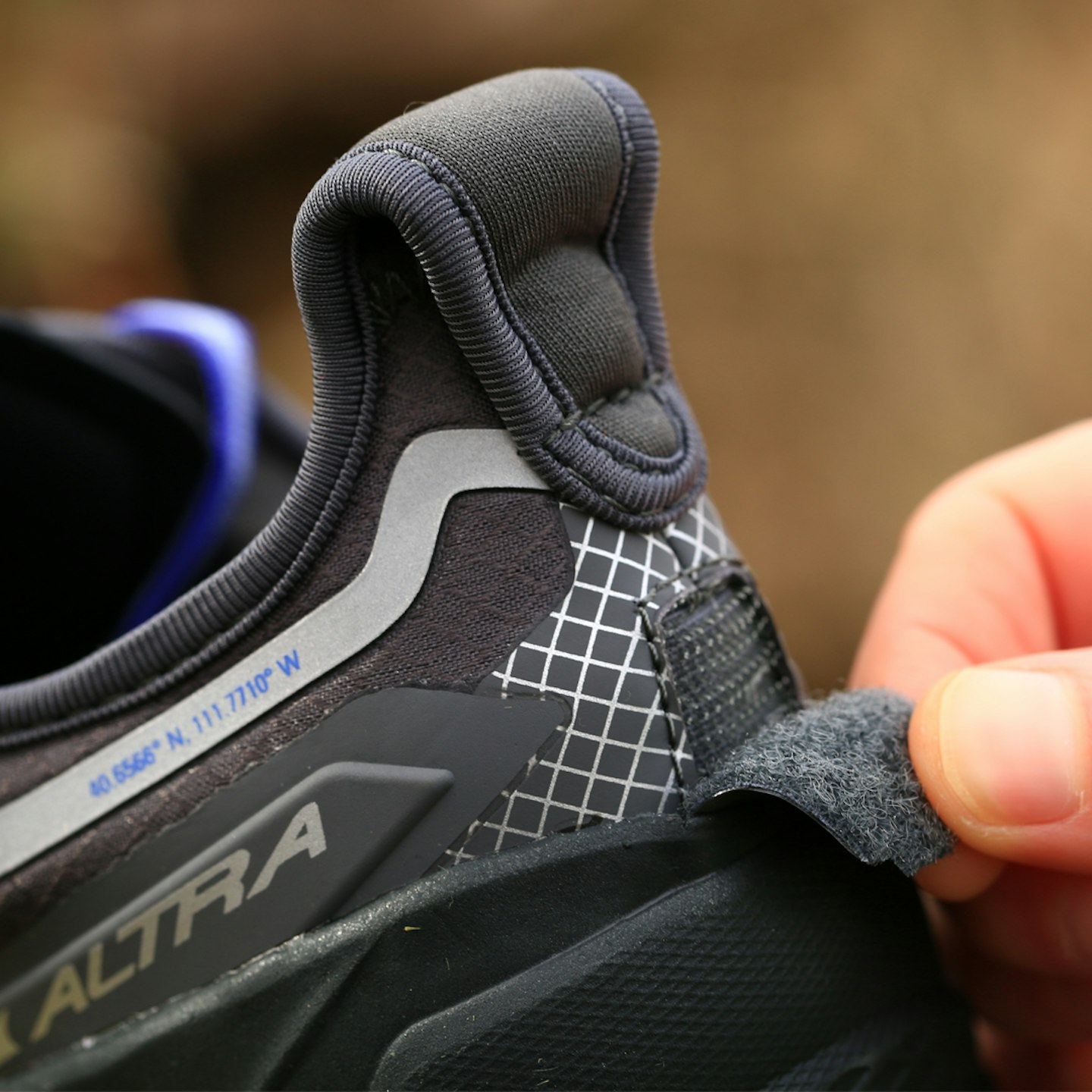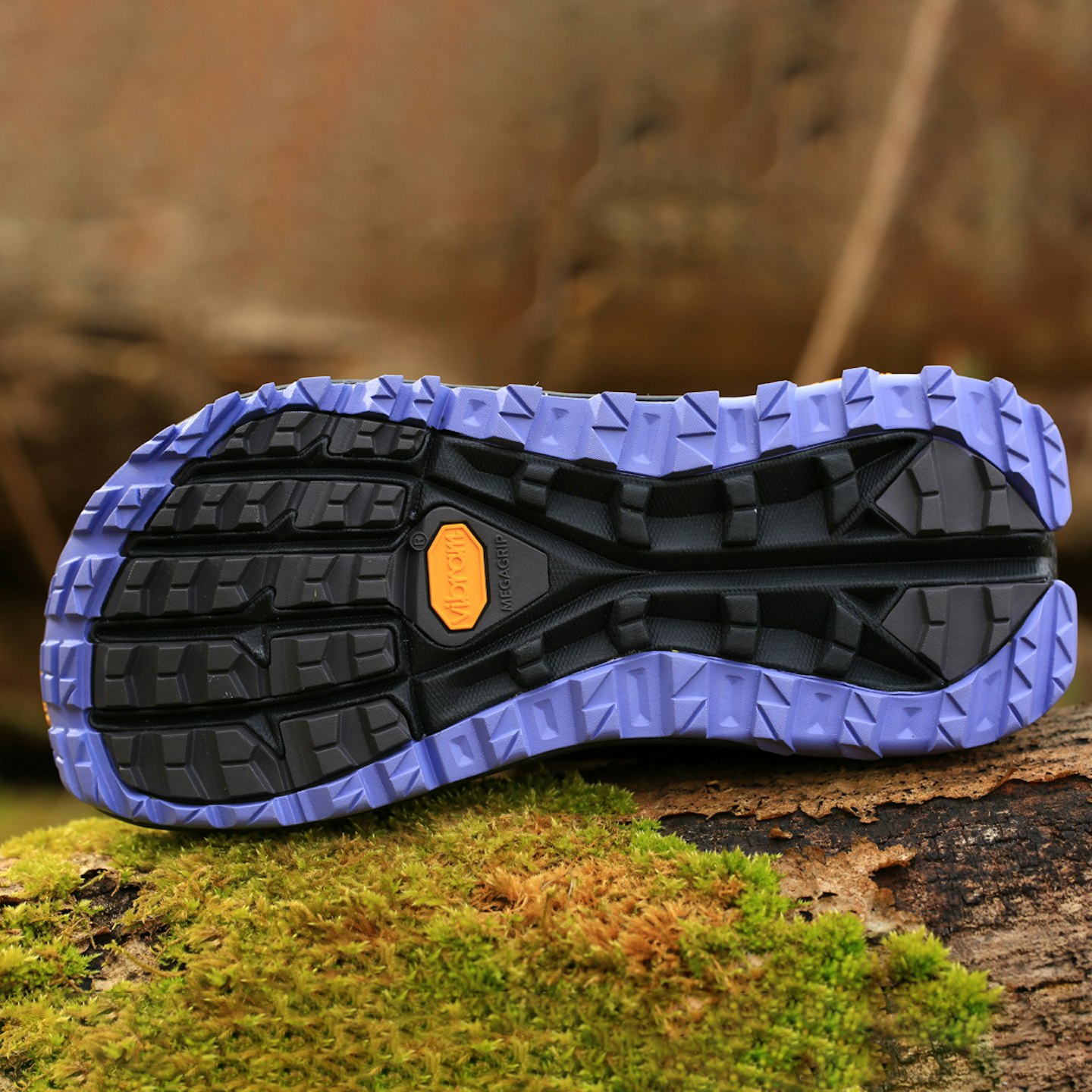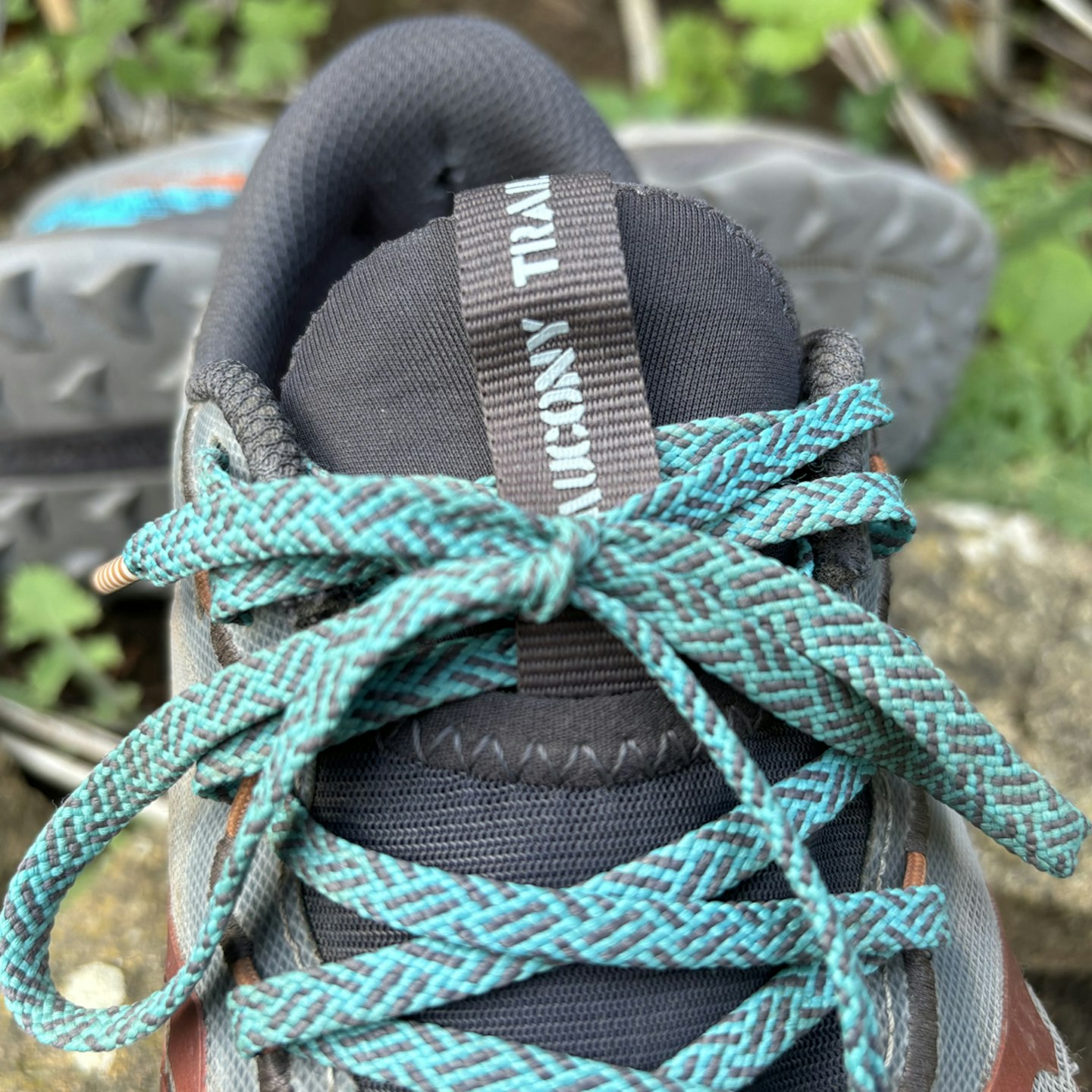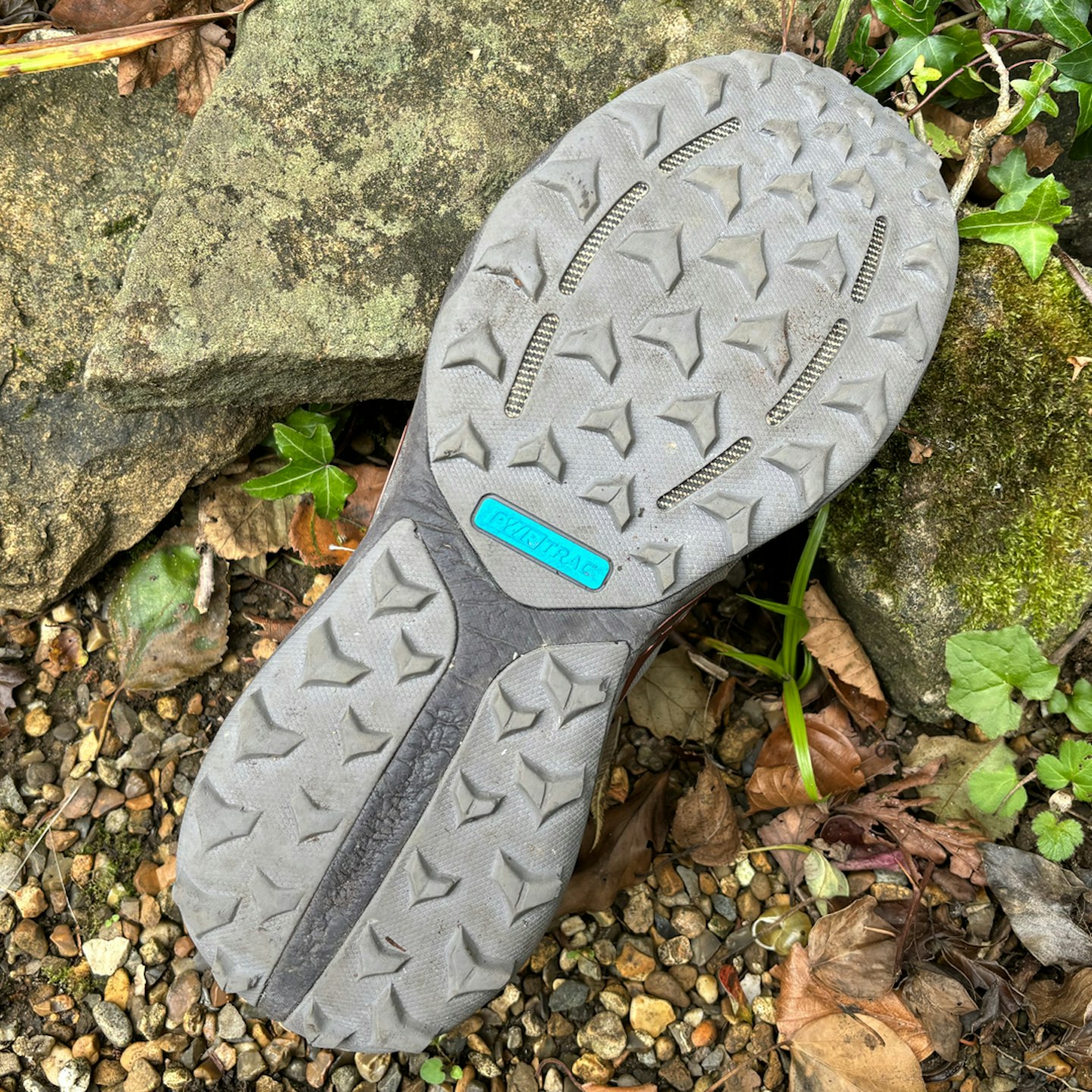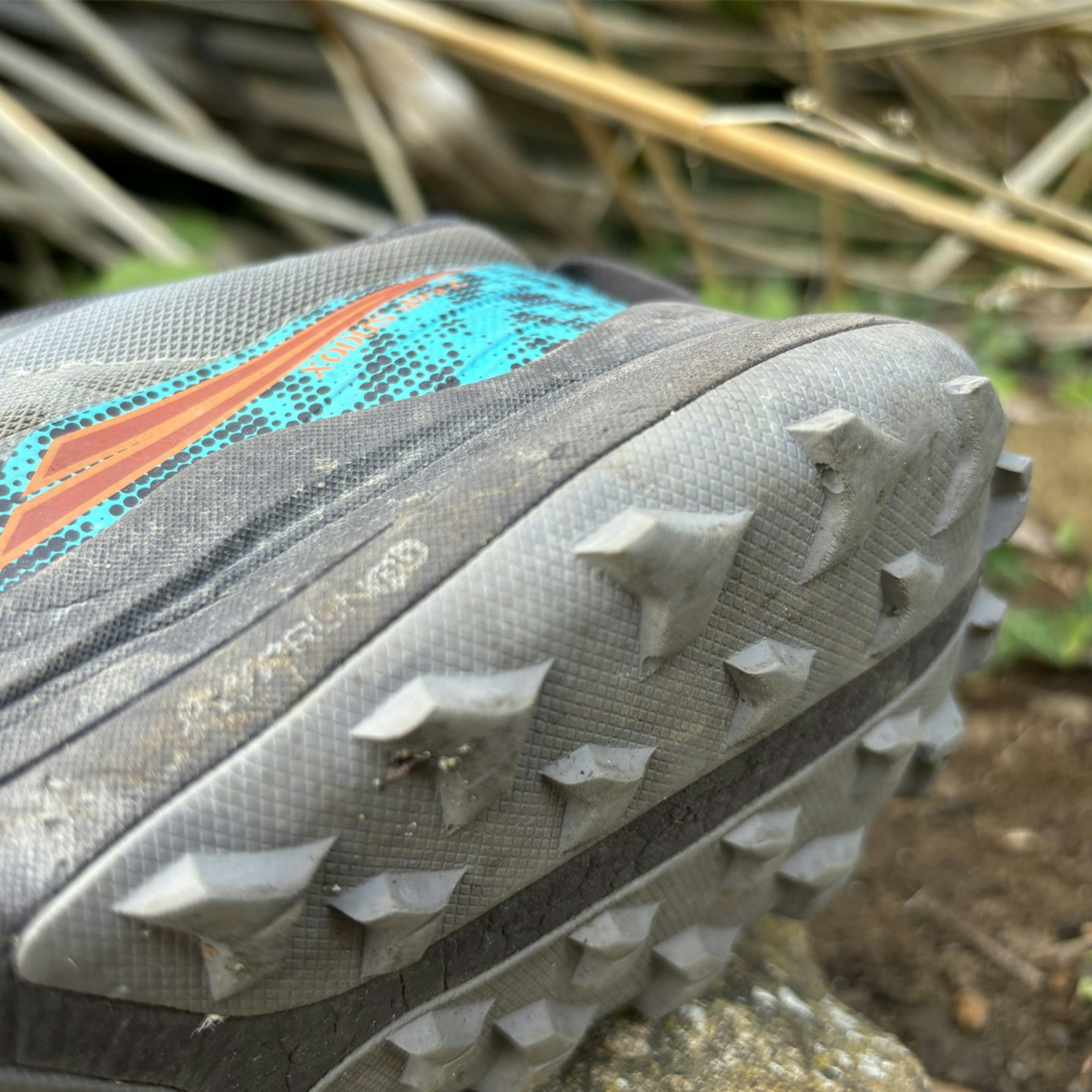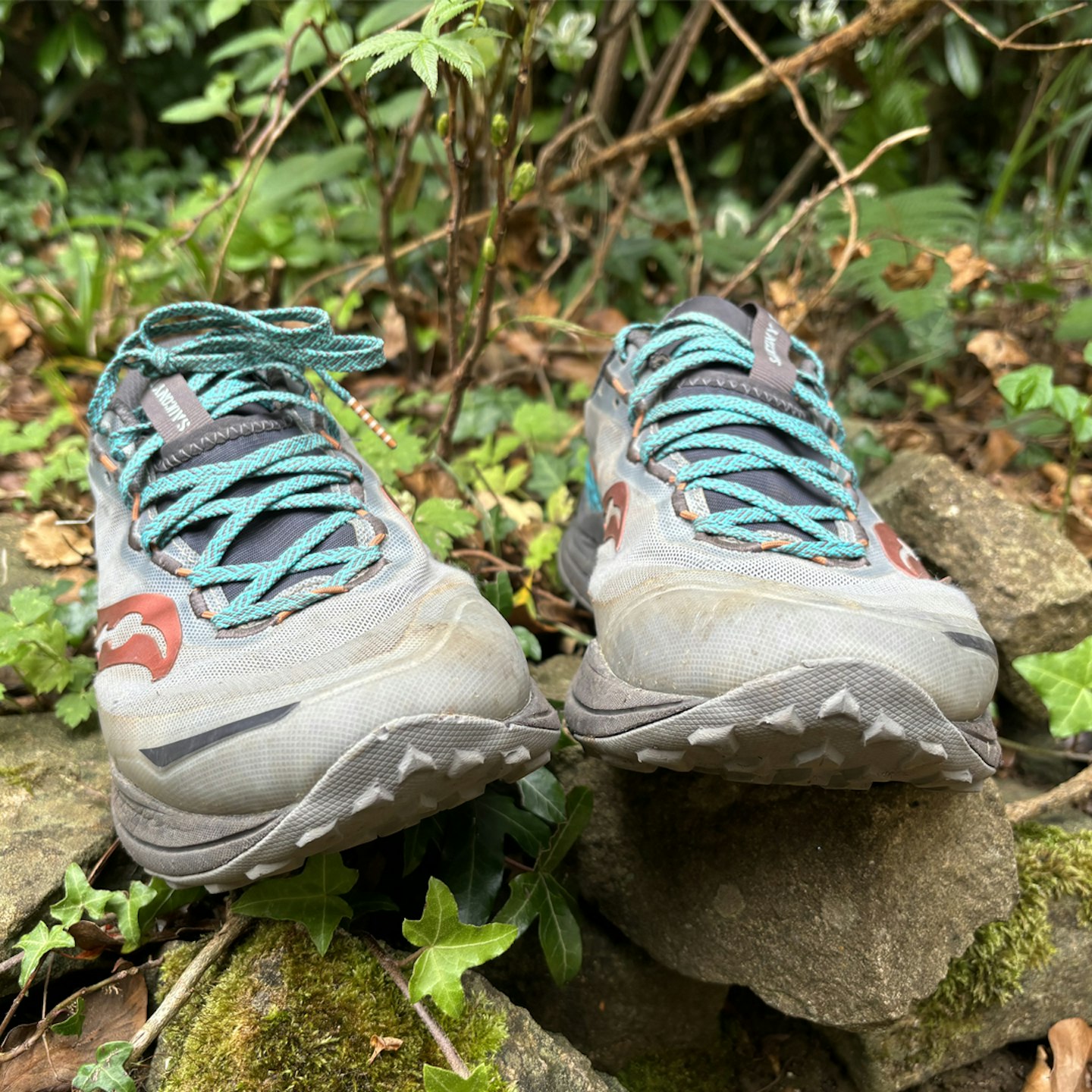Of all the sub-categories of trail running shoes, the most versatile option for most runners is road to trail. While many of us wish we could run on nothing but soft woodland trails or mountain rocks, chances are you're gonna hit some road on your way to the good stuff.
Road to trail running shoes require a range of features; you’ll need cushioning for the road, but you’ll also need high-traction grip, rock protection, and a lot of durability. A true road shoe might be able to take on easy trails at the height of summer, but come autumn, you'll need a pair that offers some extra security in slippery conditions.
In addition to good grip, you'll also want a degree of stability to support you on uneven ground. This will likely come in the form of a plastic insert in the midsole, or even a carbon fibre plate, which we'll get into in the advice section at the end of this round-up.
What are the best road to trail running shoes for 2025?
For our list, we've included a few winter trail running shoes which are always discounted in the sunnier months, but we've mostly picked lighter shoes that will perform better on the road and path sections of your run, provided you don't hit too much sludge!
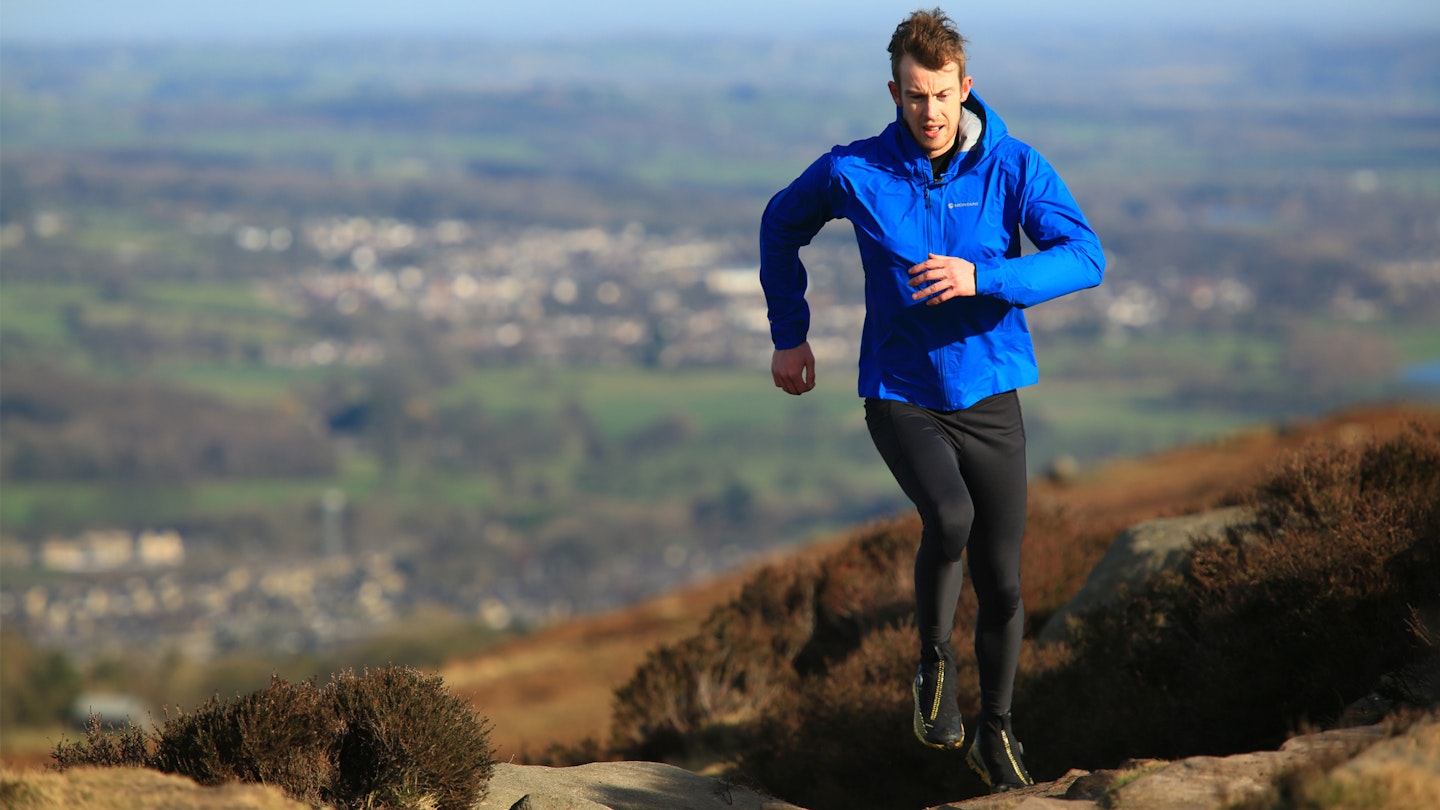
Best in test: Asics Trabuco Max 3
Best value: Altra Outroad
Best grip for wet weather: Salomon Sense Ride 5
Best for long distances: Scarpa Spin Infinity
Get discounts from Run 1000 Miles!
A lot of the shoes we recommend here are available, usually at a great price, on Sportsshoes. So remember, if anything catches your eye, you can save 15% on trail running gear by signing up to our Run 1000 Miles Challenge. Get your bespoke discount code here and enjoy the savings at Sportsshoes.com!
How we test road to trail running shoes
The trail running footwear we test undergoes thorough, real-world testing. As soon as they arrive, they get allocated to one of our experienced gear testers who take them through their paces over a range of of terrain and distances.
We consider myriad factors when testing and reviewing trail running footwear, from the obvious, such as comfort and performance, to the less obvious and intricate, such as sustainability.
The shoes in this group test were mostly put to work by Kate Milsom in the hills of Bristol. A few also went to Milo Wilson and Chris Williams, who run in the Surrey hills and the Yorkshire Dales respectively.
CLICK HERE for more info on how we test gear at LFTO.

Best road to trail running shoes reviewed:
The Asics Trabuco Max is quickly becoming one of our top picks for maximalist trail running shoes. This beast of a shoe boasts a substantial 43mm heel stack and a 38mm forefoot stack, delivering a heavenly level of cushioning comfort. Surprisingly, despite its plush cushioning, it doesn't feel heavy or sluggish in the slightest.
Credit for this goes to the innovative FF BLAST PLUS foam midsole, which reduces landing impact and enhances comfort without sacrificing ground feel. Unlike other bulky, high-stack shoes we've tested, the Trabuco manages to maintain a connection to the ground, offering stability crucial for trail running.
Furthermore, the Trabuco is environmentally conscious, with over 50% recycled materials in its construction, including the ventilated jacquard mesh upper with toe protection and an integrated gaiter system. This combination provides both structure and flexibility while safeguarding against trail debris. The foot hold is outstanding, providing comfort and support, even for those with ankle weaknesses.
The ASICSGRIP outsole is exceptionally sticky, ensuring reliable traction on wet surfaces, rocks, loose trails, and even muddy paths. While it may not be the choice for racing, the Trabuco Max 3 shines as a supportive training shoe, offering an excellent balance of cushioning, grip, and comfort.
Read our full Asics Trabuco Max 3 review here
Pros
- Highly cushioned
- Well-structured and supportive
- Traction of range of terrain
- Stylish
Cons
- Not as agile as some
- Stack height may deter minimalist-lovers
| RRP: | £160/$180 |
| Weight: | 330g/11oz per shoe (men's UK 9) |
| Men's sizes: | UK5-14 |
| Women's sizes: | UK3-10 |
| Stack height: | 43mm heel / 38mm forefoot |
| Lugs: | 4.5mm |
| Drop: | 5mm |
The first thing that hit us when we opened the box of the Altra Outroad was the same thing that hits us with all Altra shoes. The shape. Thanks to the brand’s signature Foot Shape toe box, which allows your toes to splay out naturally rather than cramp up inside, the front of the shoe seems wider than most running shoes. We’ll be honest, you’ll probably either love that enlarged toe box design or hate it. And we’re still a bit undecided on where we sit.
So what’s good about the Outroad? For a start it’s a big win for runners who prefer zero drop – a completely flat sole, with heel and forefoot on the same level. Our tester has also recently been running in the Scarpa Golden Gate ATR, which has a relatively low 4mm drop, but the difference here felt immediate. If you’re a heal striker, these shoes aren’t for you. But if you tend to plant your forefoot or midfoot first, the Altra Outroad will probably be right up your street.
The Outroad seems to easily mix between road and trail. We measured the multidrectional lugs at around 2.5mm in length, and in our experience the MaxTrac rubber outsole is capable of holding its own on everything from mud and rock to sand and grass. We’ve worn them on plenty of mid-length runs, as well as to the office and around town, and the comfort levels never seem to drop. This is a multi-functional shoe you’d be happy to wear for plenty of different activities.
The breathability feels good but protection is fairly minimal, with no rock plate beneath the Altra EGO midsole, so keep them away from the mountains. However, in terms of durability we’ve had no issues so far. In fact, they still look as good as new after a few months and well over 100 miles of use.
So overall, we’re impressed. If zero drop is what you’re looking for in a road to trail shoe, and you don’t get offended by the slightly bulbous front end of the Outroad, this could be the one. One thing to note though – this is a slim fit shoe, so worth trying before you buy to make sure you get the right size.
Pros
- Wide toe box lets your toes spread
- Great for fans of zero drop shoes
- Move between road and trail seamlessly
- Comfort and breathability are good
Cons
- You may hate that wide toe box!
- Slim fitting, so you may want to up a size
| RRP: | £125/$140 |
| Weight (UK 9): | 303g/10.69oz |
| Men's sizes: | 6-14 |
| Women's sizes: | 3.5-10 |
| Drop: | 0mm |
| Stack height: | 27mm |
| Lugs: | 2.5mm |
The Nike Zegama 2 stands out for its impressive cushioning, featuring a squishy ZoomX midsole that offers a comfortable and springy feel. As well as comfort, the shoe's high stack provides excellent energy return, and we enjoyed taking it for bouncy and fast test runs.
At first, seeing such a high stack, we did worry about the Zegama 2's stability. However, the midsole's slightly curved edges add a lot of security and and provides a wide landing platform, so the shoe doesn't feel like an ankle breaker at all.
The Vibram Megagrip outsole is a significant upgrade from the original Zegama, providing reliable traction with 4mm lugs arranged for optimal grip. It performs well on both wet and dry surfaces, sticking firmly to wet rocks and shedding mud efficiently. We also found that the outsole's flexibility helped with getting some good ground feel.
The upper is made of a thin, ventilated mesh that ensures excellent breathability. Key features include an internal heel counter for stability, a thin overlay at the toe for protection, a small ankle gaiter to keep out debris, and a padded U-shaped section that cradles the rear foot. The Zegama has all the bells and whistles, but it manages to do so without being overly flashy or having an obnoxiously high stack.
In all, the Zegama 2 is supremely comfortable and it's relatively short lugs provided much more traction than we were expecting. It performs excellently on road and trail, so we say grab it if you want a good all-rounder for summer.
**Find the women's version here
**
Read our full Nike Zegama 2 review
Pros
- Excellent cushioning
- Great grip on slick surfaces
- Durable reinforcement around pressure points
- Good flex in the midsole
Cons
- Extended heel won't be to everyone's taste
| RRP: | £164.99/$180.00<br><a href="https://www.nike.com/gb/t/zegama-2-trail-running-shoes-lBqg4F/FD5190-402"></a> |
| Weight: | 320g/11.29oz (men's UK 9) |
| Waterproof version? | N/A |
| Stack height: | 33mm/29mm |
| Drop: | 4mm |
| Lugs: | 3mm |
| Women's sizes | UK 5-8 |
| Men's sizes | UK 7-12 |
The Salomon Sense Ride 5 is designed to be a lightweight, versatile trail running shoe for mixed trails. Salomon claims the Sense 5 is equally competent over short and ultra distances.
With a lug pattern clearly angled towards hard-packed trails and at 3.5mm, these shoes really maximise grip over firmer ground thanks to the Contragrip sole. This makes them ideal for occasional stints on the road. They're also agile, managing to remain surprisingly lightweight despite the comfort provided.
For those with slightly narrower than average feet, the Sense 5 feels blissfully comfortable in use. The generous heel arch hugs and supports the foot, while the padded heel nicely locks you in place to avoid slippage during descents. Despite this, there's clearly a balance being struck here between padding and agility, with the forefoot feeling firm and responsive.
Overall, the Sense 5 is a great choice for those door to hilltop runs where you need a good all-rounder trail shoe to get the job done. Sounds good to you?
**Read our full Salomon Sense Ride 5 review.
**
Check out the women's version here
Pros
- Good value
- Great for a wide range of terrain
- Balance of cushioning and responsiveness
- Quicklace system
Cons
- Mid to narrower fit won't suit all
- Brand sustainability could be better
| RRP: | £135 |
| Weight (UK8.5): | 286g/10.09oz |
| Women's sizes: | UK3.5 - 9.5 |
| Men's sizes: | UK6.5 - 13.5 |
| Drop: | 8mm |
| Stack height: | 29.6mm/21.3mm |
| Lugs: | 3.5mm |
| Waterproof version? | Yes |
The Hoka Zinal 2 has undergone significant improvements compared to its predecessor. It's notably lighter, featuring a reduced heel drop, taller, more aggressive lugs, and a stretch-knit collar that acts as a gaiter, seamlessly integrated with the tongue.
These changes enhance responsiveness and energy return, making it a great choice for shorter runs. Despite reducing some of Hoka's usual cushioning, the shoe still offers ample shock-absorption through the midsole, making it well suited to the roads and trails alike. It falls on the "Responsive" end of Hoka's cushioning scale.
The fully integrated stretch-knit tongue and collar are a standout design feature, offering easy slip-on access and keeping debris out. The shoe sits lower around the ankle than we're used to, but this is quickly forgotten once you get moving, and it certainly contributes to the light weight.
One minor drawback is the pull-tab on the rear, which may rub against the Achilles tendon when worn with super-low trainer socks. But this has an easy fix, which we're sure you can guess. Take a look at our Hoka Zinal 2 review to find out more.
Pros
- Incredibly lightweight
- Aggressive outsole with great traction
- Still has decent cushioning
- Close fit and firm lacing
- Stretch knit collar to keep out debris
Cons
- Plasticky upper can affect breathability
- Still too cushioned for some trail purists
- Sits very low round the ankle
| RRP: | £160/$180 |
| Weight (UK9): | 217g/7.61oz |
| Women’s sizes: | UK 4-9 |
| Men’s sizes: | UK 7.5-13.5 |
| Drop: | 5mm |
| Stack height: | 30mm |
| Lugs: | 5mm |
| Waterproof version? | No |
Scarpa offers a diverse range of trail running shoes, but the Spin Infinity excels in providing essential structure, comfort, and stability for longer distances.
The neutral, mid-weight Infinity offers impressive structural support with its rigid heel counter and foot-wrapping overlay that extends to the laces, allowing for a snug, secure fit. The shoe has a gentle 4mm drop and slightly curved dual-density foam midsole, all of which combine to help the Infinity strike an excellent balance between structure and flexibility.
Ample padding in the heel and tongue, known as Scarpa's 'Adaptive Cushioning System,' prevents heel slippage while maintaining comfort. While the 26mm stack height provides good ground protection without leaving you feeling overly elevated as you run.
Breathability through the open mesh panels on the upper feels plenty, while the gusseted tongue and extended TPU toe bumper do a good job of warding off unwanted trail debris. The shoe also includes a convenient mesh pouch on the tongue to secure laces out of the way as you run.
Featuring 4mm Vibram Velox Cross lugs, the Spin Infinity can handle various terrains, performing best on dry and less technical trails.
**Read our full Scarpa Spin Infinity review.
**
Check out the men's version here
Pros
- Sturdy and supportive
- Enough cushion for longer distances
- Breathable and comfortable
- Grippy over range of terrain
Cons
- Not as agile/propulsive as some
| RRP: | £160 |
| Weight per shoe (UK5.5): | 268g/9.34oz |
| Waterproof version? | No |
| Drop: | 4mm |
| Stack height: | 26mm/22mm |
| Lug depth: | 4mm |
| Men's sizes: | UK6.5 - 13 |
| Women's sizes: | UK3.5 - 8 |
The Hoka Challenger 7 is a boldly designed, plush road to trail running shoe with the typical Hoka flare. The Challenger 7 is ideal for runners who are after a shoe that'll provide both comfort over hard surfaces and traction over non-technical off-road terrain.
Compared to its predecessor, the Challenger 7 features a redesigned midsole with increased cushioning, yet at a lower weight. Plus, there's a Gore-Tex version for winter running.
The shoe's midsole is made of soft compression-molded EVA foam with an increased stack height, providing ample impact absorption. The Durabrasion rubber outsole has 4mm lugs which fare well over grass, shallow mud and gravel trails.
The Challenger 7's engineered mesh upper has been redesigned to be more breathable than the 6, with ventilation points at the centre of the foot which help to avoid getting overly sweaty while running. It's easy to slide the shoes on via the exaggerated heel tab, with the padded heel collar helping to lock in the foot when running.
While not the most agile option, the Challenger 7 are best suited to training runs when you want to be comfortable and supported. They're best suited to medium-distance runs, offering a good balance between road and trail performance.
**For more, read our full Hoka Challenger 7 review.
**
Check out the men's version here
Pros
- Cushioned and comfy
- Thick midsole for impact absorption
- Tack both road and non-technical trail
Cons
- Not grippy in thick mud
- Heavier than some
| RRP: | £130/$150 |
| Weight (UK5): | 218g/7.69oz |
| Waterproof version? | Yes |
| Men's sizes: | UK7-UK13.5 |
| Drop: | 5mm |
| Stack height: | 31mm/26mm |
| Lugs: | 4mm |
| Women's sizes: | UK3.5-UK10.5 |
The Blissfeel Trail is lululemon’s first-ever pair of trail running shoes, the brand having previously stuck to sleek sportswear, plus a few gym and road trainers.
While this shoe shares a midsole with original Blissfeel shoe, the Blissfeel Trail’s upper is made to be more durable than its road counterpart, with an extra protective layer to improve longevity. You'll also find a rubber toe bumper for further protection, though it is fairly slim.
We're pleased to see a grippy TPU rubber outsole, which sports unique-looking circular lugs of 4mm. These aim to help provide traction and stability over uneven terrain, but they're not as aggressive as most other hardcore trail shoes.
In our testing, we found that the moulded heel succeeds in its design intention, huging and securing the foot to avoid any slippage. Meanwhile, the outsole rubber climbs up the heel to produce a slightly extended heel counter for extra stability as you run.
And, of course, we might as well mention the aesthetics. You do find that classic Lululemon look, with some multi-tonal colourways that made us bite our nails when hitting the mucky trails. The subtle off-white colouring didn't last too long, but maybe you'll get more out of them as a primarily road-running shoe.
Check out our full lululemon Blissfeel Trail running shoe review for more.
Pros
- Road to trail entry shoe
- Versatile
- Good visibility
- Mid price-point
Cons
- Not super run-ergonomic
- Lack propulsion
- Could do with more cushioning
| RRP: | £148/$158 |
| Weight (per UK6.5 shoe) | 280g/9.8oz |
| Women's sizes | UK3.5 - 10.5 |
| Drop | 9.5mm |
| Stack | Unknown |
| Lugs | 4mm |
| Waterproof version? | No |
With a stack height of 33mm, the Olympus 5 may be zero drop, but it’s certainly not minimalist. Altra says the Olympus 5 is their most cushioned trail running shoe, the chunky EGO MAX compression moulded foam midsole feels plush and protective underfoot.
There’s also zonal cushioning around the top of the heel collar and a slight injection along the gusseted tongue. This results in a nice, locked-in feel when running. Plus, the wide-set laces are extremely reflective in low lighting, an unexpected bonus. However, we did find that though the tongue was nice and thin, it sat very rigidly along the foot and dug into the ankle, rather than moulding to the shape of the foot as we’d expect.
The main attraction for Altra fans is the wide toe-box, the resulting alien-esque look sets the shoes apart from most other trail shoe brands we’ve tried. Altra call this ‘Original FootShape fit’, a concept around which they’ve built their entire identity. The larger toe-box aims to allow the toes to naturally spread out, for better comfort and stability.
While the toe-box does feel larger than your normal trail shoe, we did feel our toes touching the end of the shoe from time to time. This fifth version of the Olympus seems to run a little smaller in sizing and shorter in length to its predecessor, we’d size up by .5 next time.
We have no complaints when it comes to the super grippy Vibram Megagrip outsole, which held its own in sloppy mud, loose rocky trails, and over wet rock. If you like to double up on the protection by strapping on gaiters, you can do this via the heel tab. The upper’s also nice and breathable, with plenty of aeration to keep us cool over longer runs.
Pros
- Well-placed cushioning
- Grippy lugs
- Wide toe-box
- Well built
Cons
- Sizing runs a little small
- Tongue digs into ankle
- Zero drop won't be for everyone
| RRP: | |
| Weight per shoe (UK5.5): | 275g/9.70oz |
| Men's sizes | UK 7-13 |
| Women's sizes | UK 3-10 |
| Heel stack | 33m |
| Drop | 0mm |
| Lug depth | 5mm |
These shoes, with their 6mm heel-to-toe drop, are a natural choice for long-distances across varied terrain. However, it's important to note that they come in only one width size, featuring a relatively narrow toe box. For those with larger feet, this snug fit might pose some discomfort after a few hours.
The Xodus Ultra 2 impressed us with its generous cushioning, courtesy of the PWRRUN PB foam. We found this cushioning to strike an ideal balance for road to trail runs — great impact absorption on hard surfaces without the midsole feeling excessive on muddy trails.
The neoprene-like tongue locks your foot down solidly, and an additional fabric layer shields against debris intrusion, which we always appreciate.
During our runs, the cushioning proved remarkable. It delivered a noticeable bounce on solid terrains, yet maintained a grounded feel softer surfaces. The Xodus Ultra 2 feels like a nimble running shoe, where other options can sometimes feel like you're wearing huge platforms.
The PWRTRAC undersole showcases impressive grip across various conditions, excelling in both wet and dry environments. Whether on rocky trails or slippery surfaces, these shoes provided the traction needed to navigate with confidence.
Pros
- Agile design
- Protective toe box
- Versatile multi-directional lugs
Cons
- Not the best for wide feet
- Some weak spots in the upper
| RRP | £149.99 |
| Weight (UK 9) | 272g/9.59oz |
| Women's sizes | UK 4-9 |
| Men's sizes | UK 6-13 |
| Drop | 6mm |
| Stack height | 32.5mm heel/26.5mm forefoot |
| Lugs | 5mm |
| Waterproof version? | No |
What to look for in a road-to-trail shoe
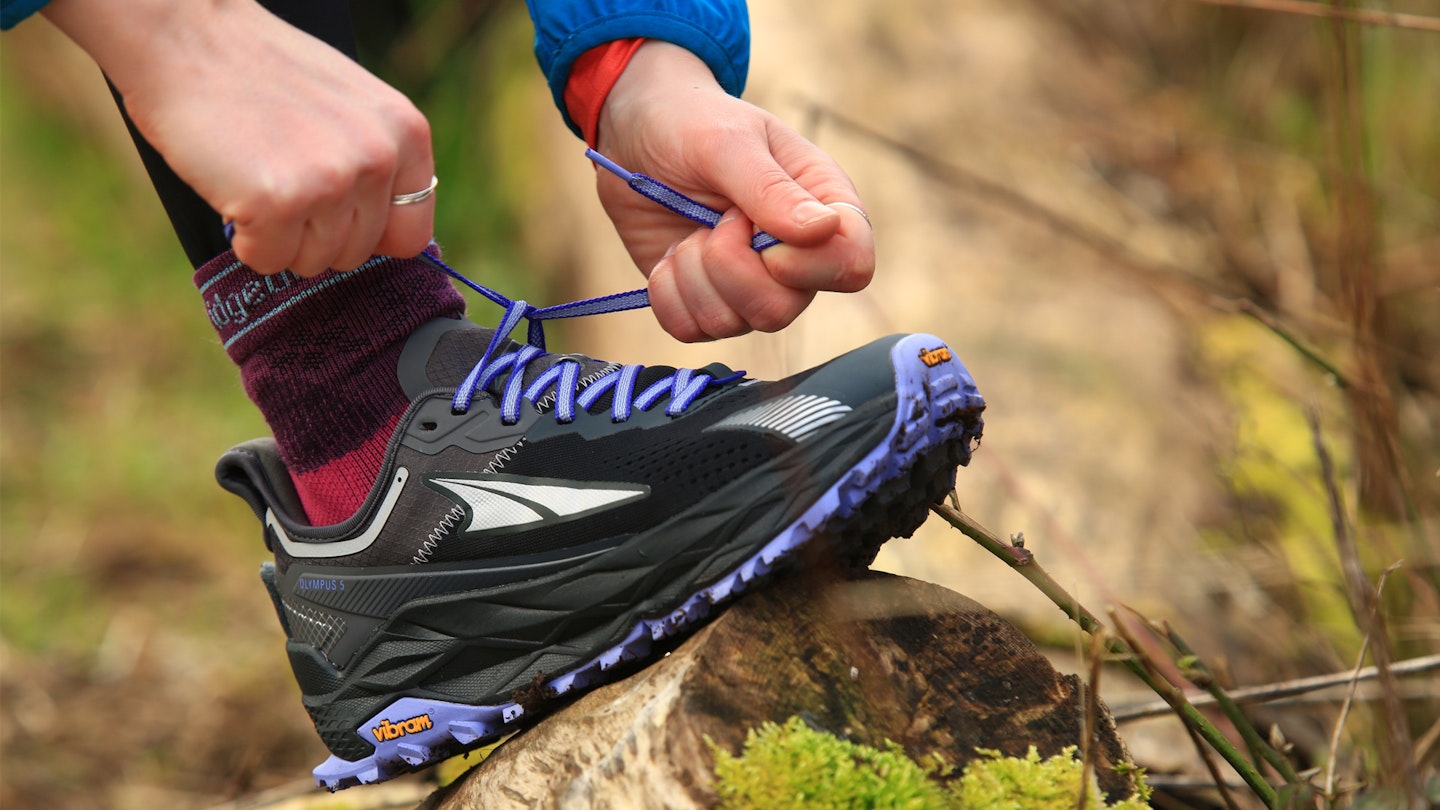
Carbon
For many of us, the road is all about running that bit quicker and there’s no argument carbon provides runners with more response harder, more uniform trails. Some will run faster, while some will benefit from the reduction in impact carbon provides. Yes, there’s a cost but it’s well worth the investment.
Breathability
In the same way you’d look for fabrics that breathe in t-shirts, go for materials that allow air and water vapour to escape from inside the shoe, while also allowing cooler air from outside to enter.
Weight
Of course, there’s no definitive weight in a running shoe as more than any other product, it’s very much individual. But, as a general rule, summer shoes are lighter and swifter feeling, so you’ll be thinking of shoes that weigh less than 300g for that rip roaring 10km PB. If you’re thinking long distance though, think about additional cushioning and therefore in some, but not all, additional weight, bringing the shoes into the mid-300s.
Toe box
The rocks will be there summer, or winter so look for protection in that department year round.
Drop
There’s almost a generational gap here. Older shoe models work off an 8mm-12mm drop for a higher, more cushioned ride while many of today’s shoes come in at around 4mm-6mm for a closer to the ground, faster feel. As with any shoe advice, it’s always about what feels good personally. In theory, it’s worth progression to lower drop shoes as they do feel quicker (half the job), but it can be at a cost for your calf muscles. There are lower drops as well with 0mm replicating barefoot. The jury is out at the moment as to what is best!
Midsole
EVA, PU, TPU or Pebax are the foams of choice for most brands. All offer softness and flexibility to different degrees.
Fit
There’s the traditional lacing system of course, but the Salomon system and the Boa fit in a variety of brands including La Sportiva and Adidas do offer superb stability on rough, steep terrain. Consider the surfaces you’ll be running. Tough descents and contouring lend themselves to this new fit system.
Lug length
Summer shoes will offer less in the grip department, so lugs around 3mm at the most, while winter shoes go all the way up to 6mm and even beyond on occasion. Rubber, of course, wears quicker so longer lug length shoes need to stay strictly off-road!
Do I need road to trail running shoes?
If you're thinking of exploring beyond pavements and paths, then learning all about trail running shoes is an important step, for your own safety as much as comfort. A sleek pair of road running shoes is are a couple of knee-scrap time bombs if you start to take them into wet and wild woodlands or uneven rocky terrain.
You need running shoes with extra protection to ward off errant rocks and roots, and lugs along the outsole (grippy spikes on the bottom) to latch onto the ground and help propel you forwards as you enjoy the trail.
But, of course, mostly everyone will need to contend with both road and trail on their everyday run routes, so investing in a road to trail shoe can make your runs much more enjoyable and smooth. They strike the perfect balance between cushioning, midsole impact absorption, and grip, to deliver a shoe that can cope with extended sections of road running as well as some mildly muddy and gentle trails.
How trail running shoes should fit
The size you choose for your next pair of trail running shoes really depends on what distance you're planning to run. We’re not suggesting you go crazy and order several sizes up from your usual digits, but it’s worth bearing in mind that as you run, four-times your bodyweight goes through your feet upon impact with the ground. That’s basically like repeatedly hitting the soles of your feet with a frying pan for the duration of your run.
Obviously, this is going to have an impact on your feet - they will swell. So to ensure you remain comfortable and rub-free, it’s worth sizing up 0.5-1 sizes on what you’re normally used to wearing, especially if you’re planning on running long distances.
Other than that, make sure if your feet are particularly wide you get a wide-fit shoe or look at brands like Altra whose shoes are designed with extra room in the toe-box. Equally, if your feet are extra narrow, you’ll need slimmer shoes like some Salomon ones, in order to still be able to achieve that locked-in, blister-free fit.
Caring for your road to trail running shoes
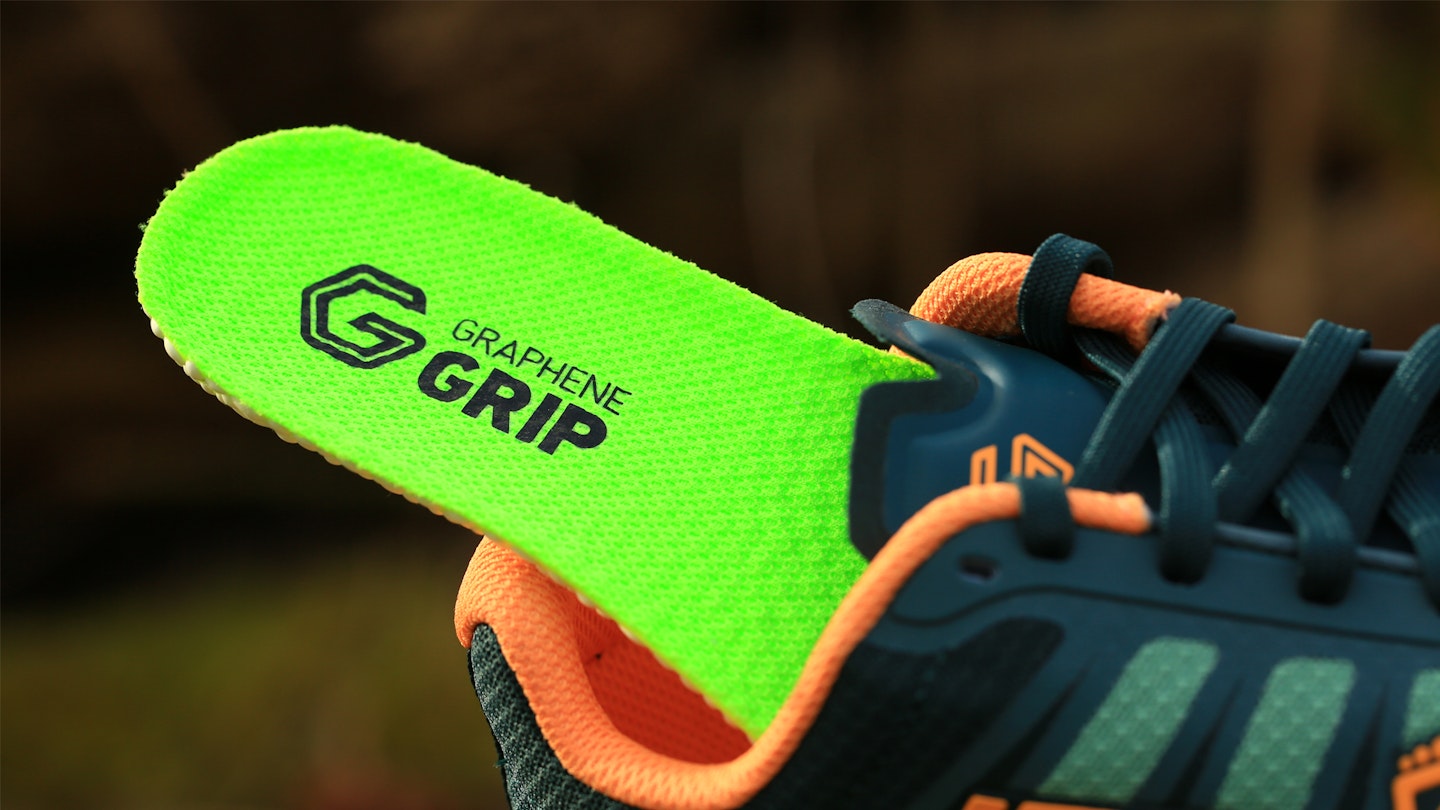
A bit of footwear care can seriously extend the lifespan of your outdoor gear. Keep fabrics clean to maintain breathability, and waterproof fabrics need reproofing every so often to maintain water repellency. Here are the main staples of our kit care collections...
Best dryer bags
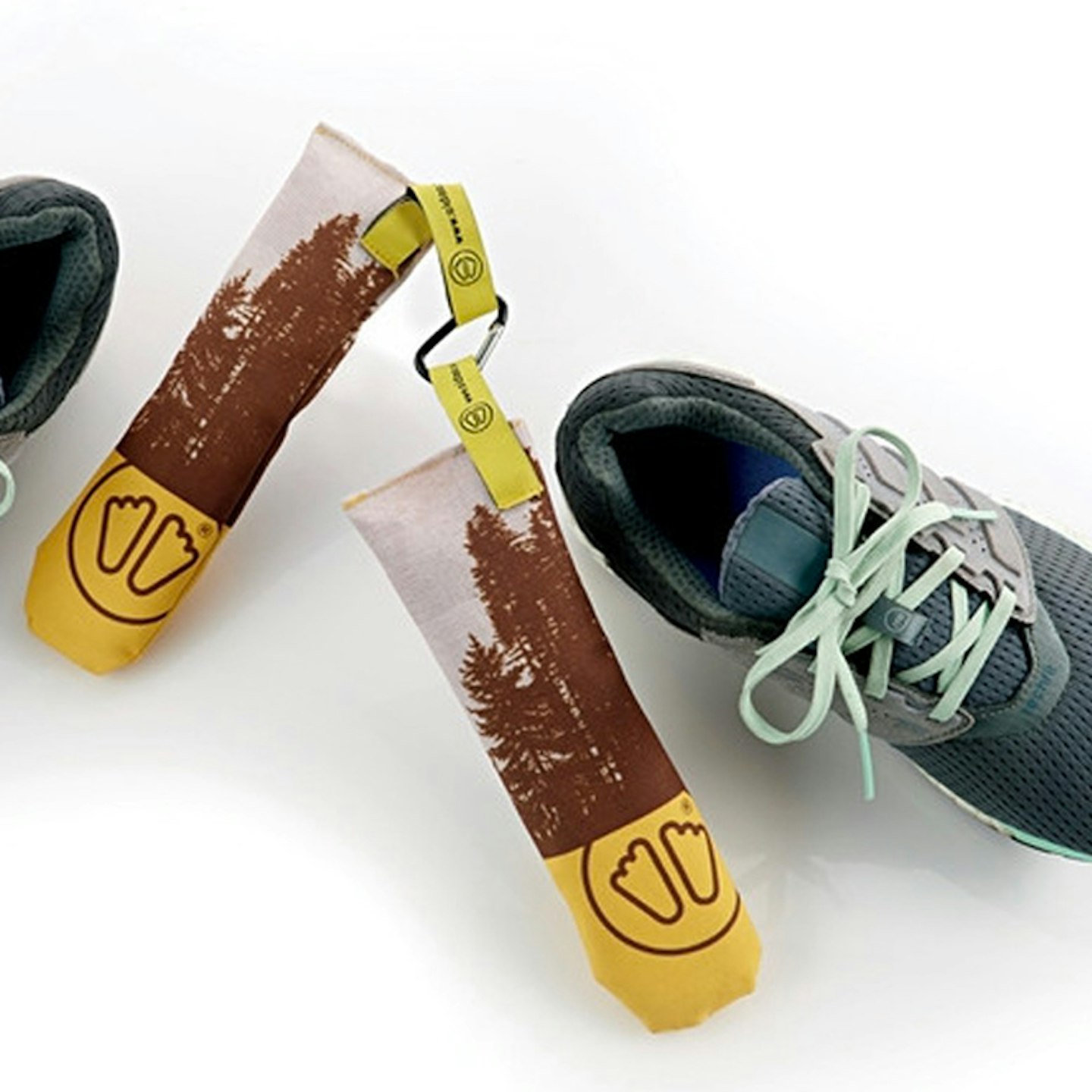 Sidas
Sidaswww.sidas.com
Especially as the weather is getting worse, we can't recommend these dryer bags enough. While the other products in this list will keep your shoes squeaky clean on the outside, these will help soak up the moisture from your running shoes on the inside. This is crucial for mitigating that lethal post-run 'pong'.
The way they work is pretty neat – the sacks are stuffed with 100% cedar wood, which absorbs moisture out of the inside of a shoe four times quicker than air drying. They're also re-useable – simply hang them up to dry after use for six hours in between runs, then they're ready to go again!
Pros
- Good for multiple uses
- Greatly reduces chances of mould
- Refreshes your shoes in 4 hours
Cons
- Takes up to 6 hours between uses
Best cleaner spray
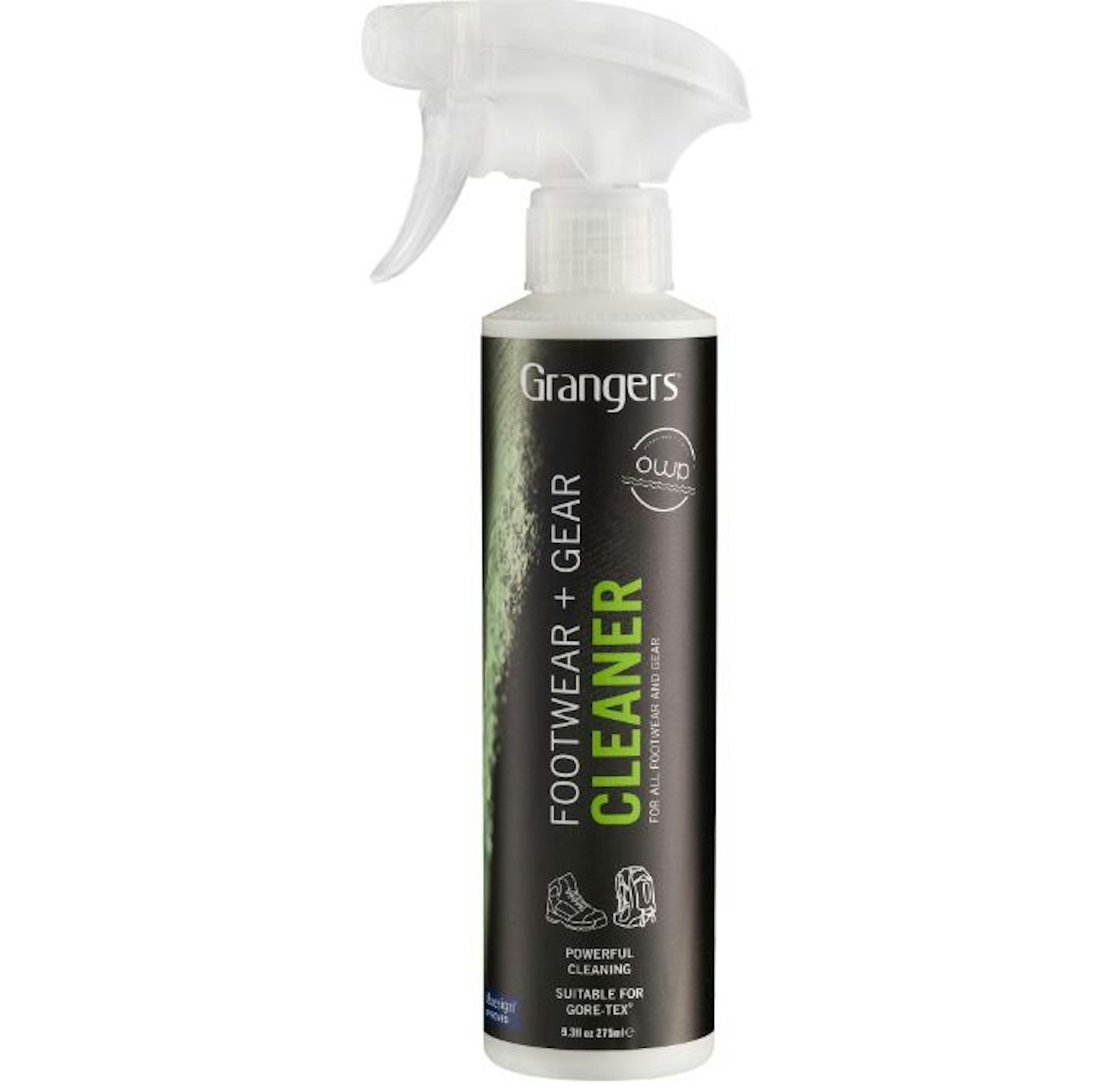
This spray is a PFC-free, environmentally conscious spot cleaner (275ml), designed for footwear and outdoors gear. It's also Gore-Tex friendly, so won't denigrate the longevity of your waterproofing.
Pros
- Sustainable ingredients
- Cleans without reducing protection
- Good value for long term use
Cons
- Best used with a good amount of water
Best care kit
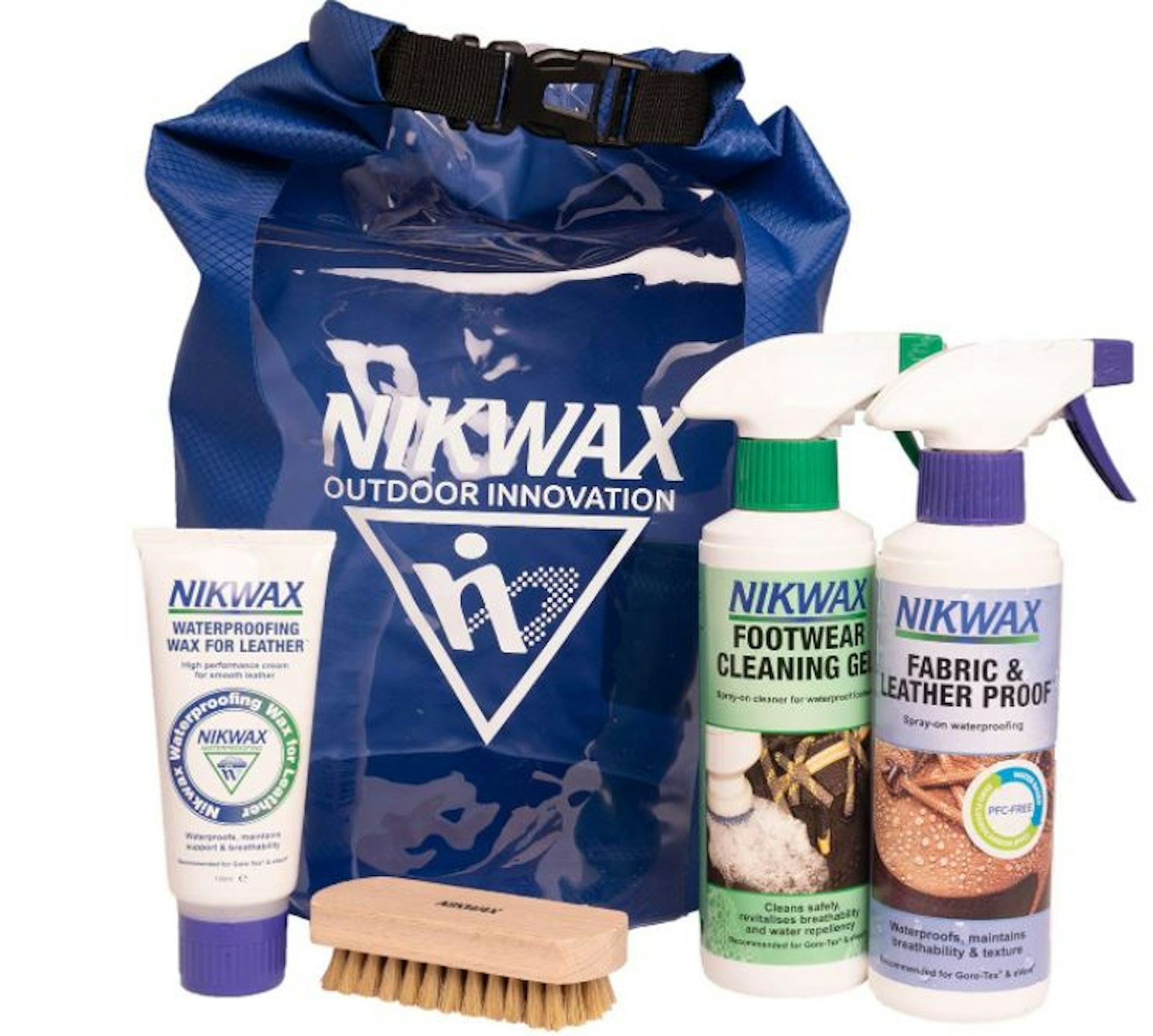 Amazon
AmazonThis Nikwax bundle is a footwear care kit for leather and fabric materials, complete with a brush and a dry bag. This kit earns high marks for its sustainability credentials, and the included dry bag proves invaluable during extended running trips and adventures.
Pros
- Versatile
- Dry bag is effective
- Can be used on multi-fabric items
Cons
- Brush can be quite coarse
About the author
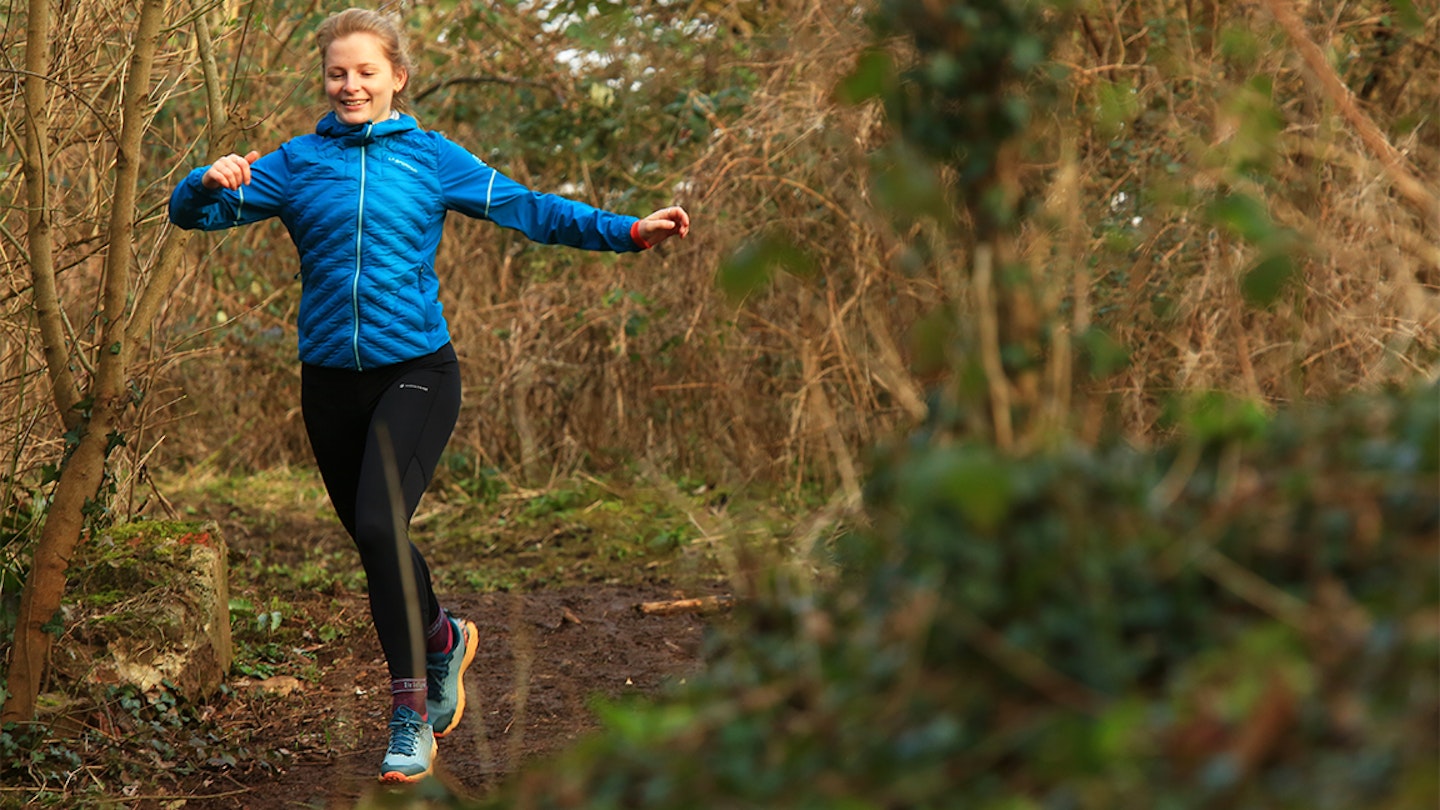
Kate Milsom is an experienced outdoor journalist and gear reviewer who specialises in trail running content. Kate is an ultra runner and triathlete, having previously worked on cycling and triathlon publications, she joined Live for the Outdoors in 2022.

